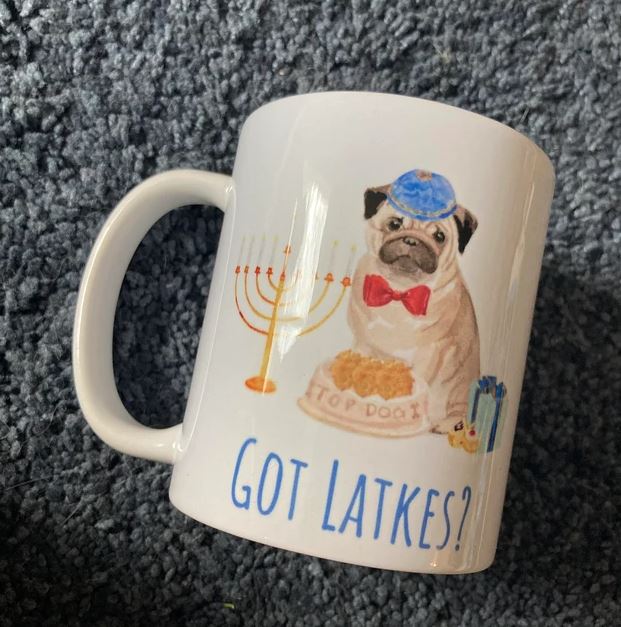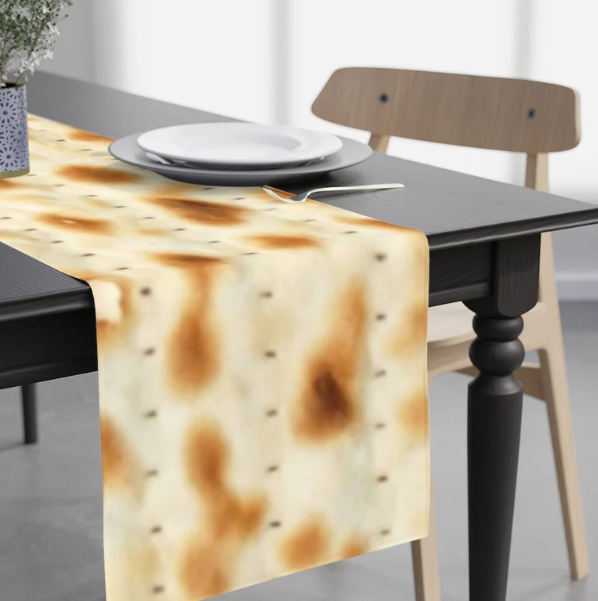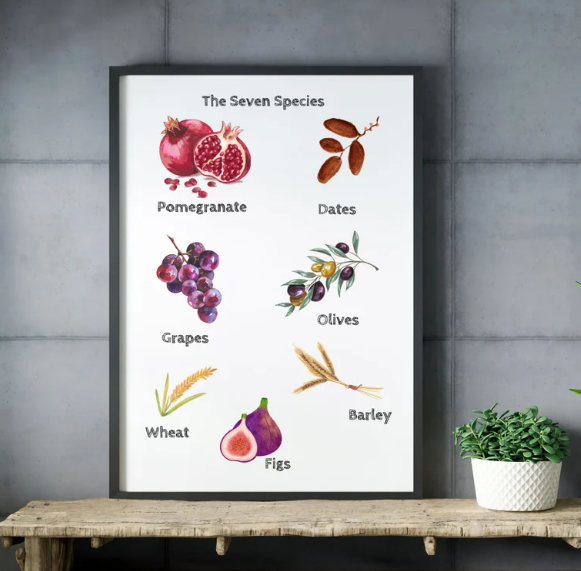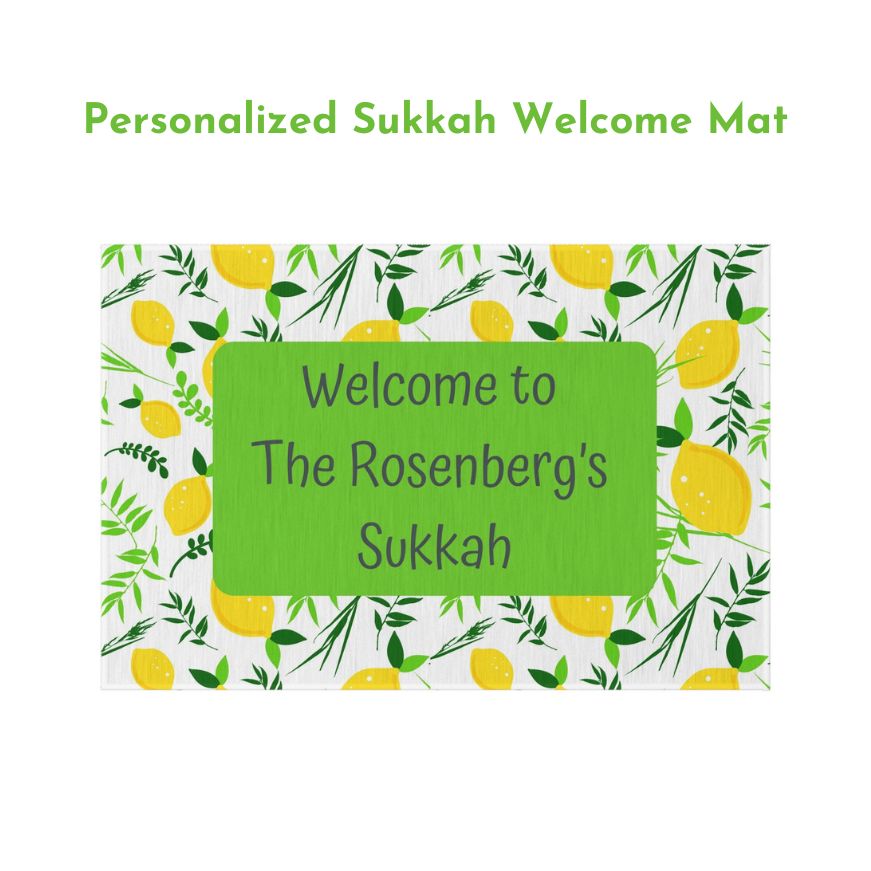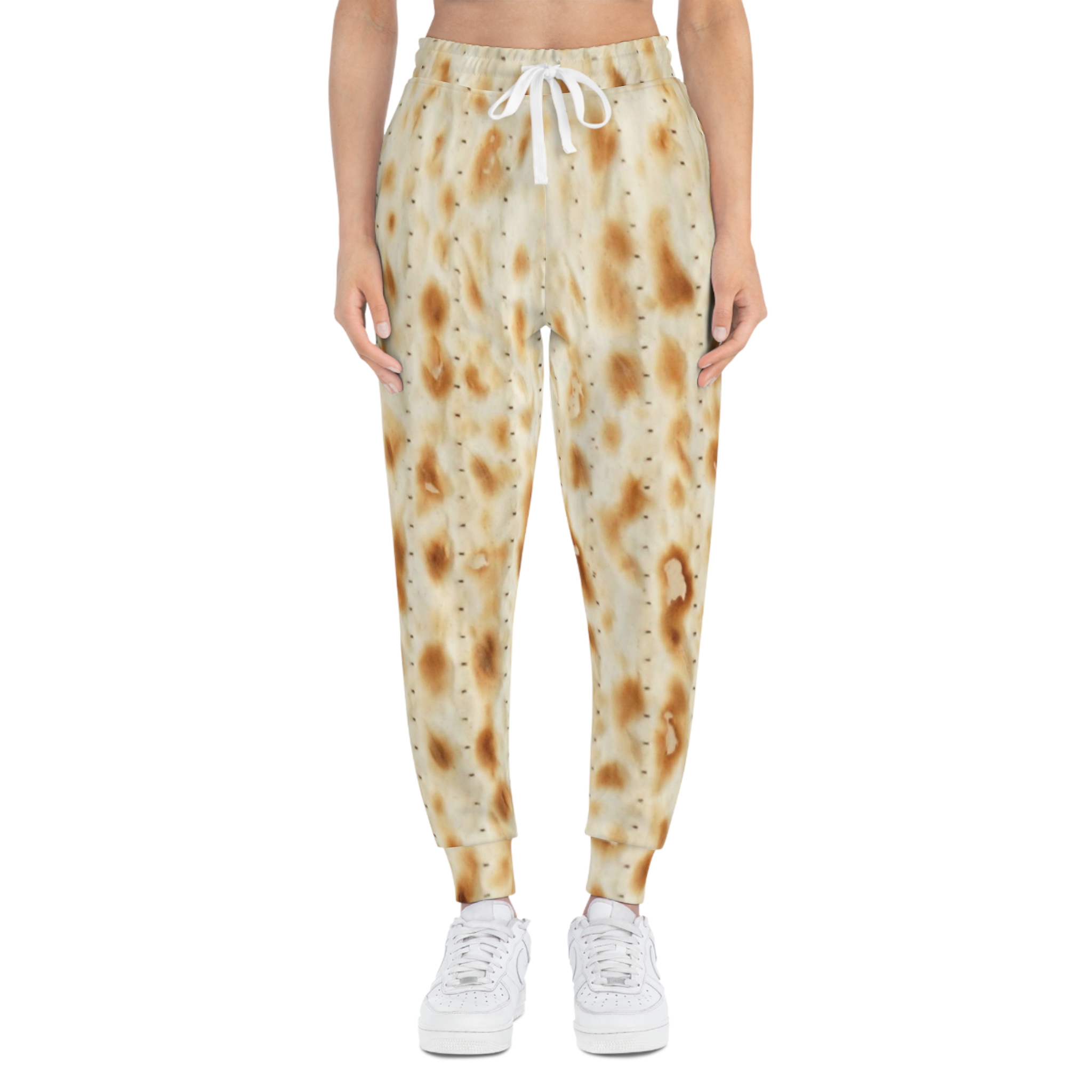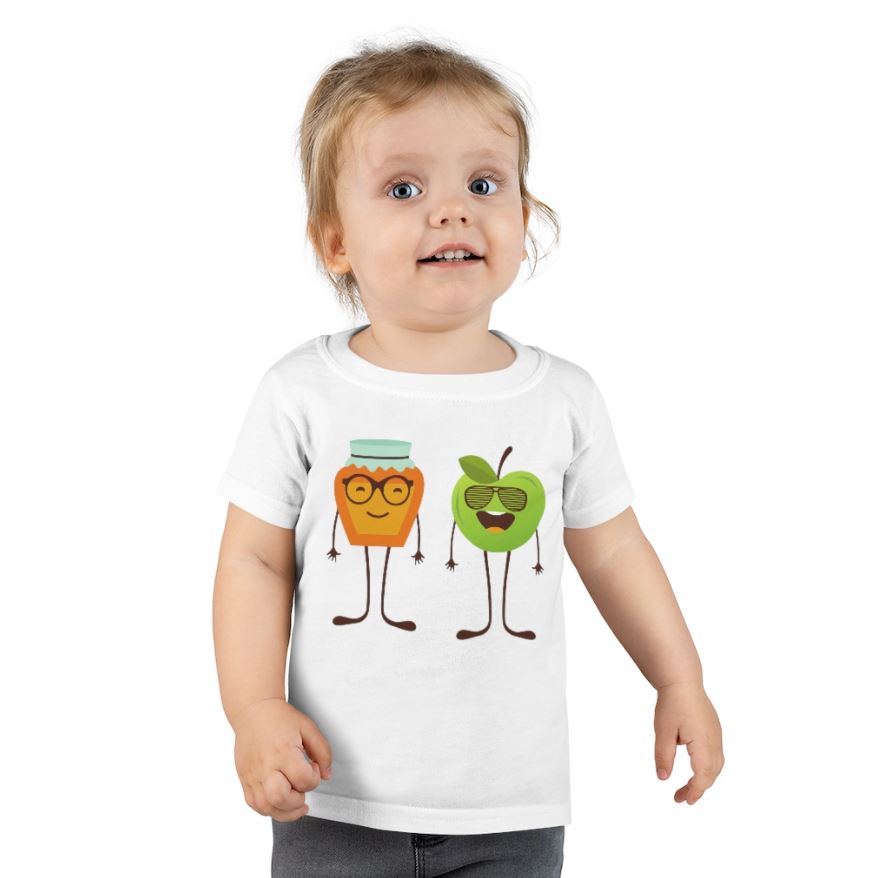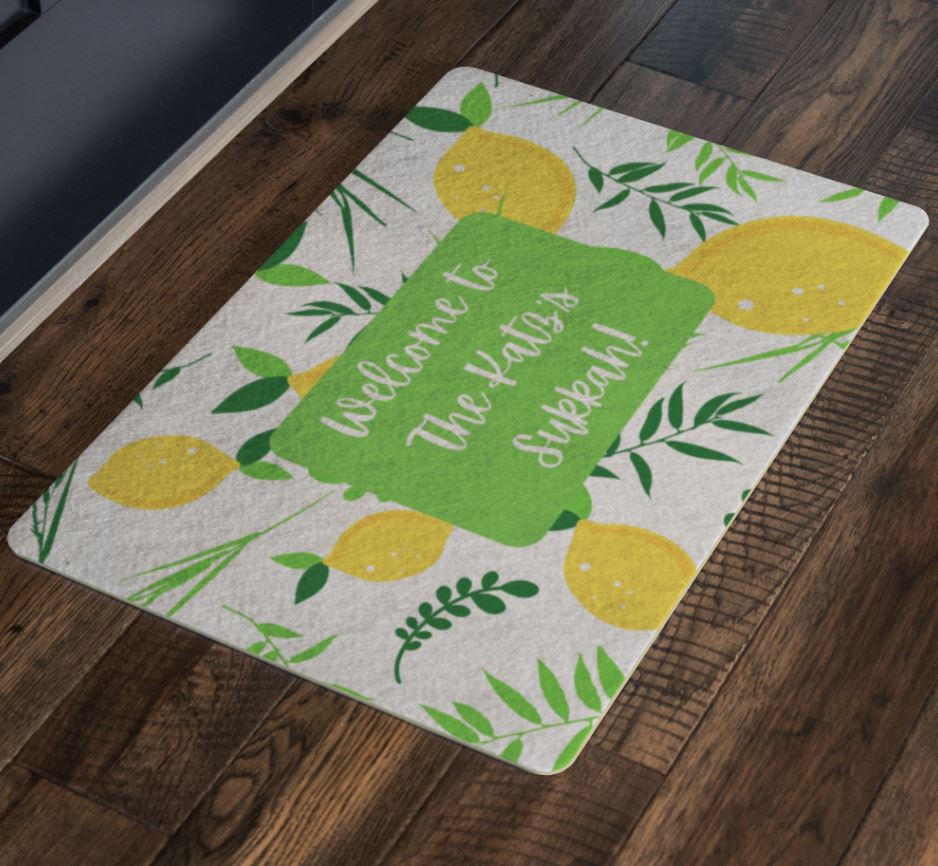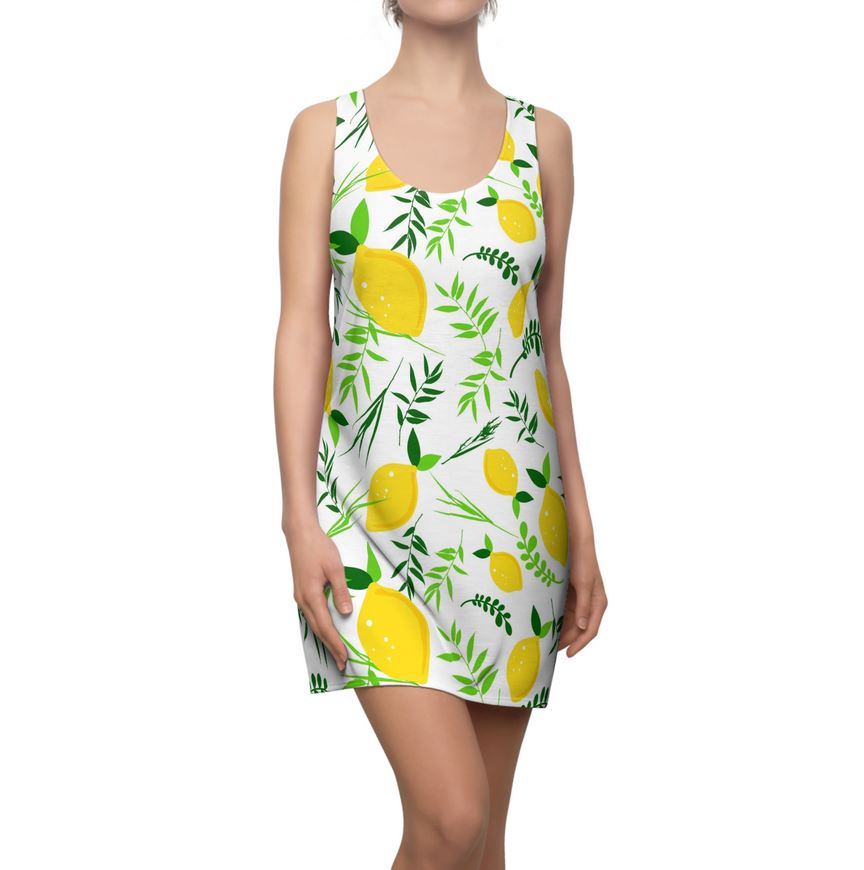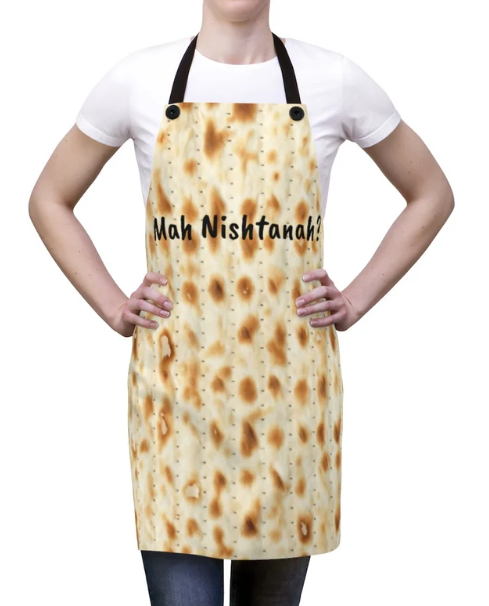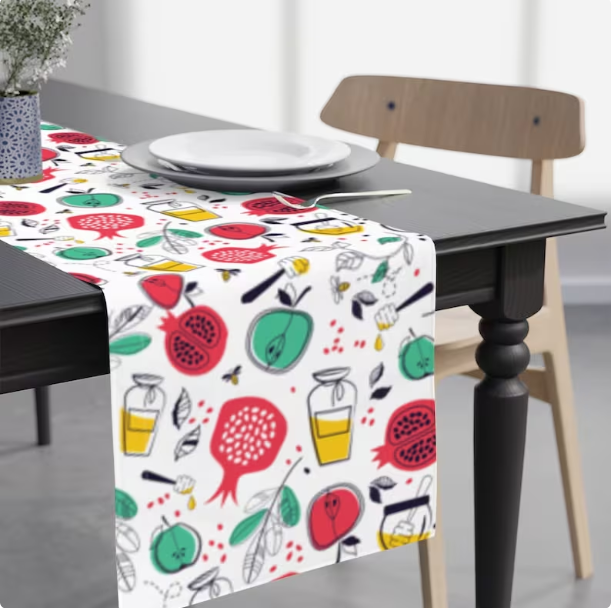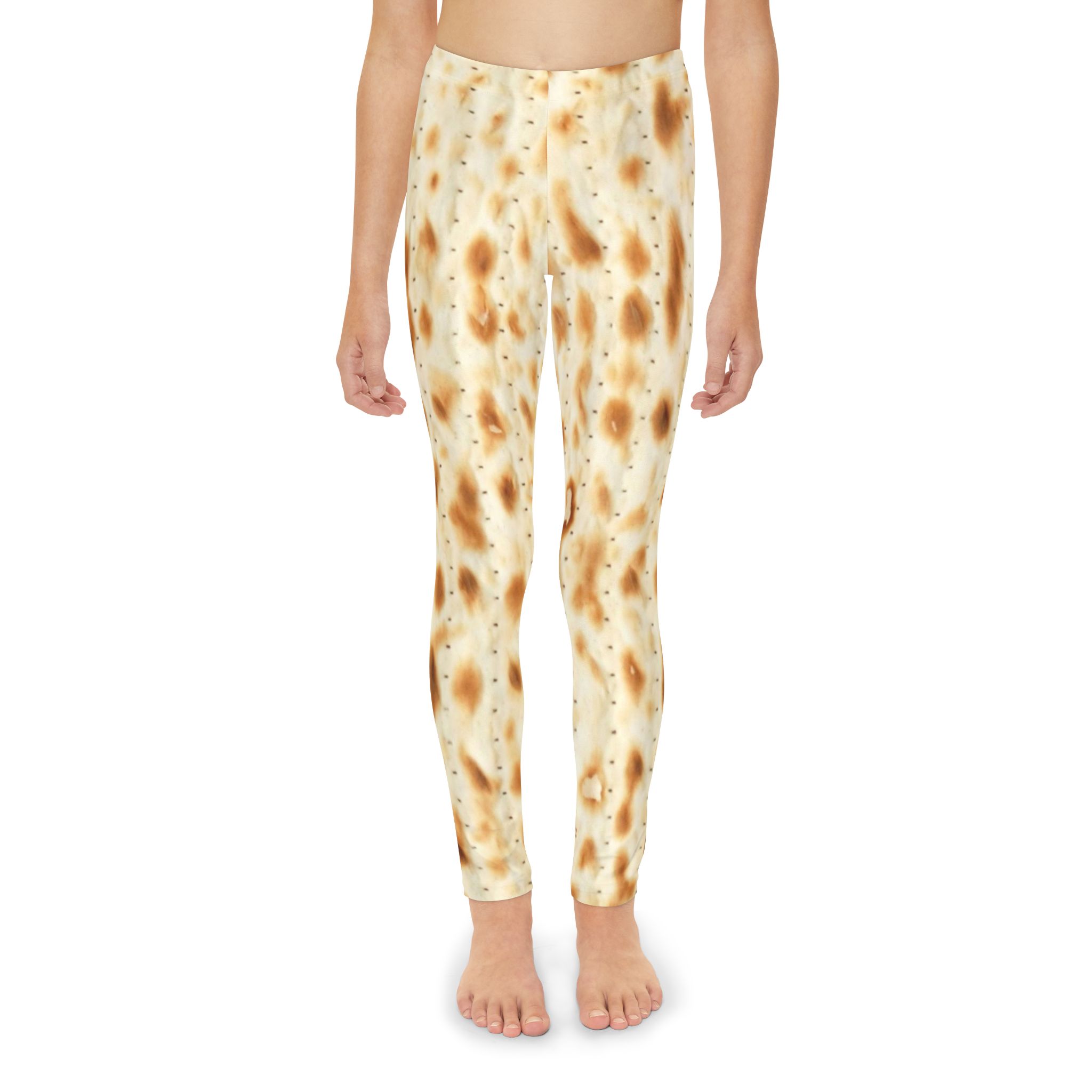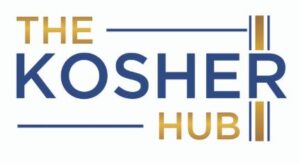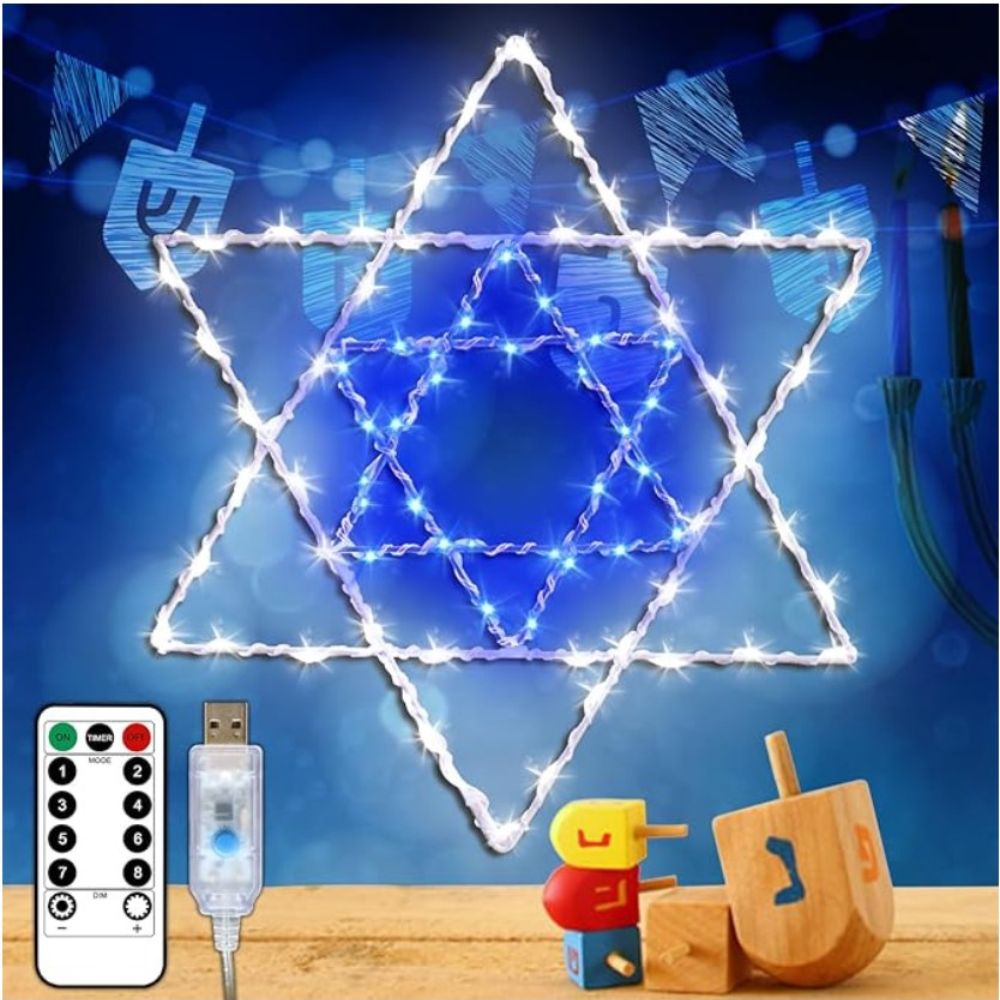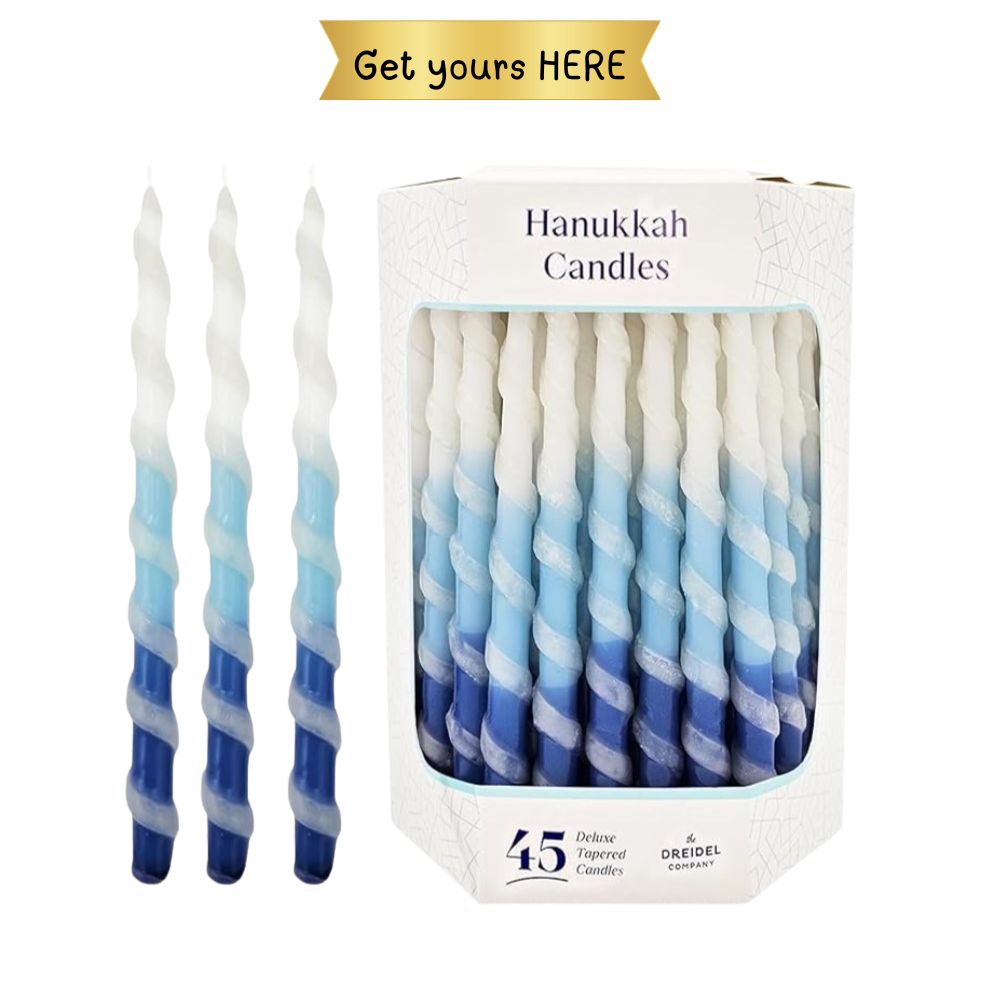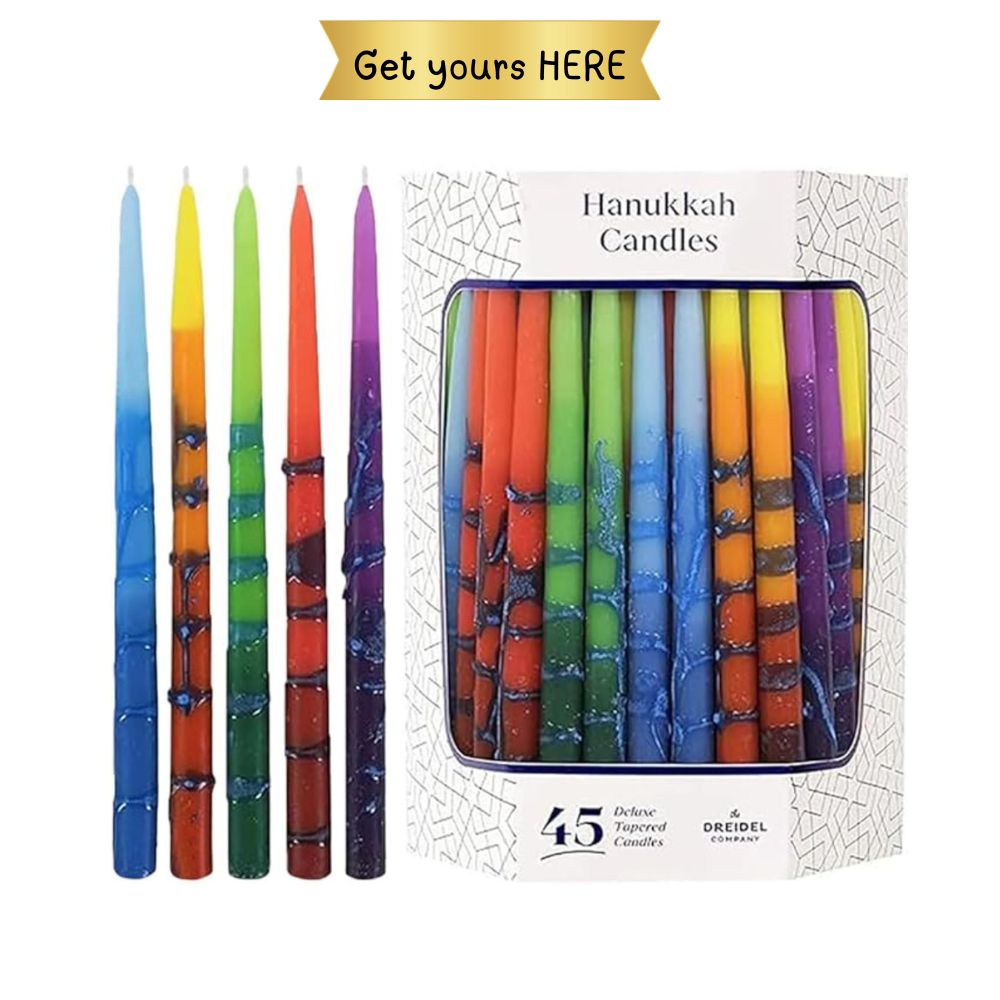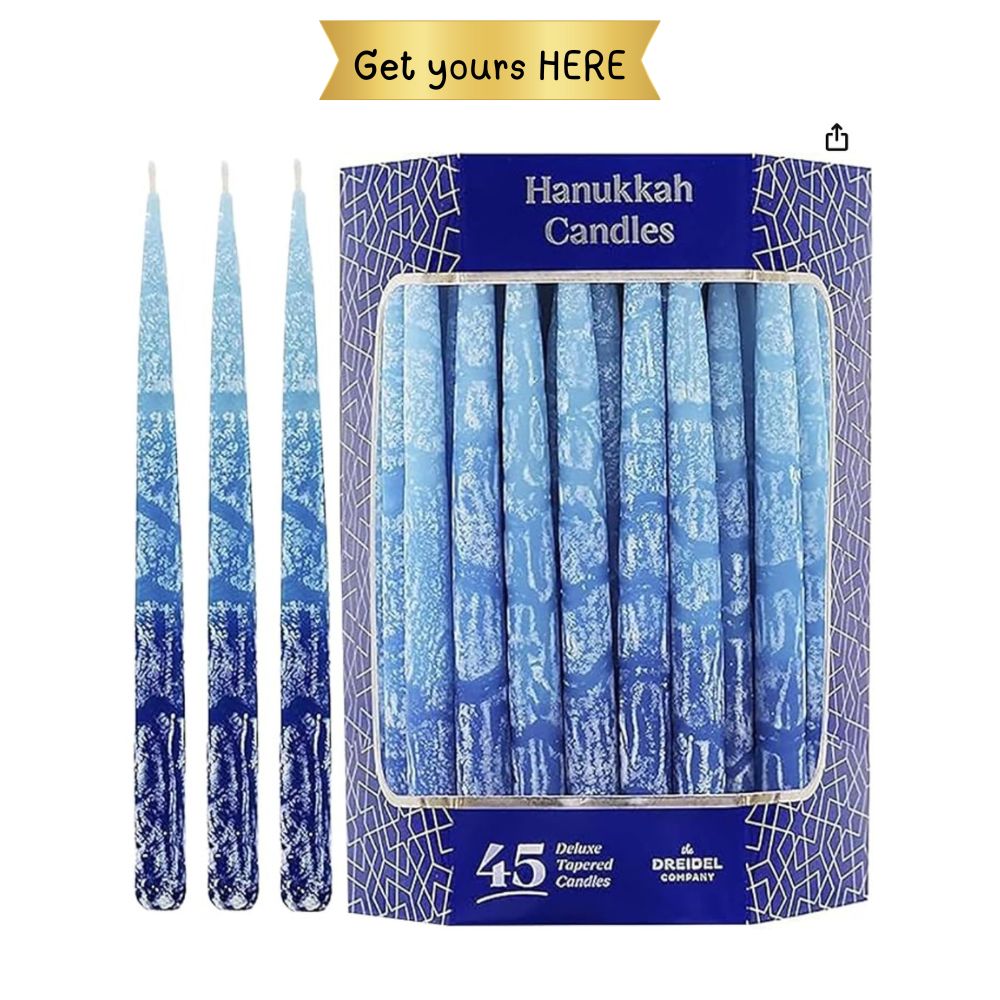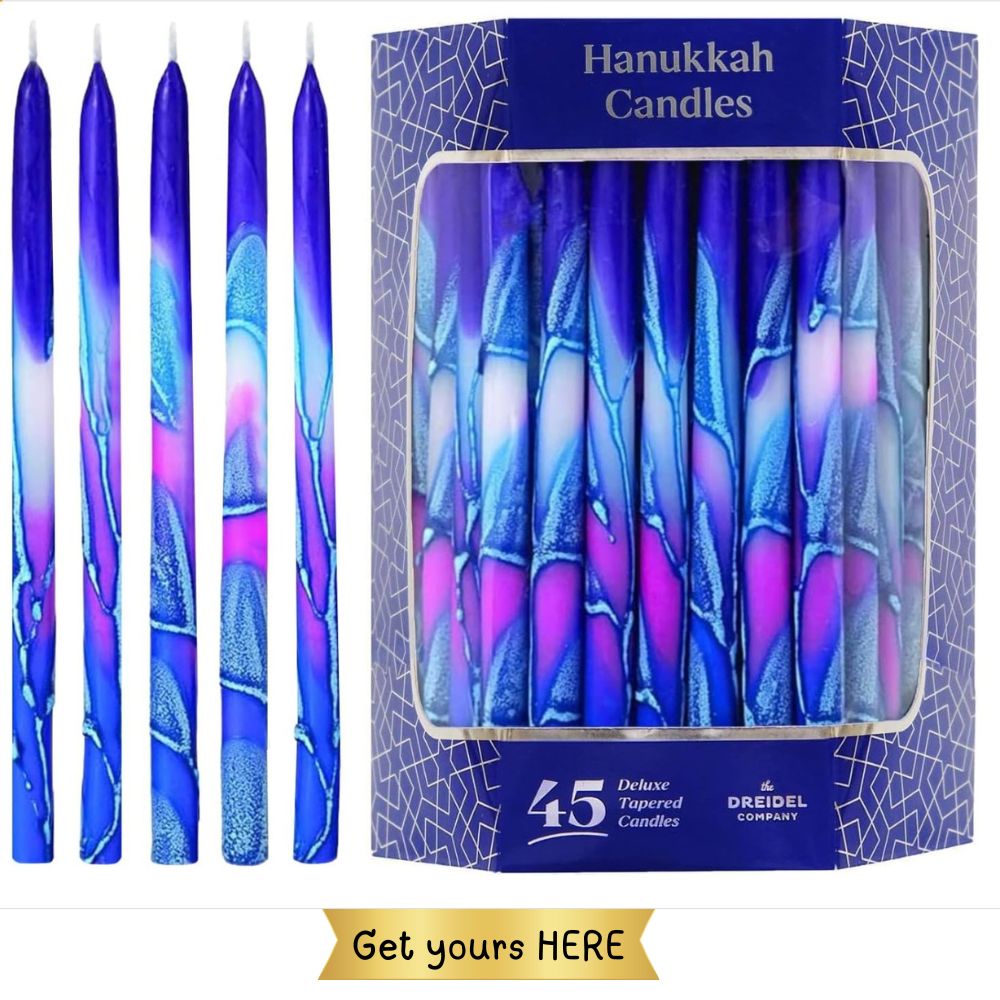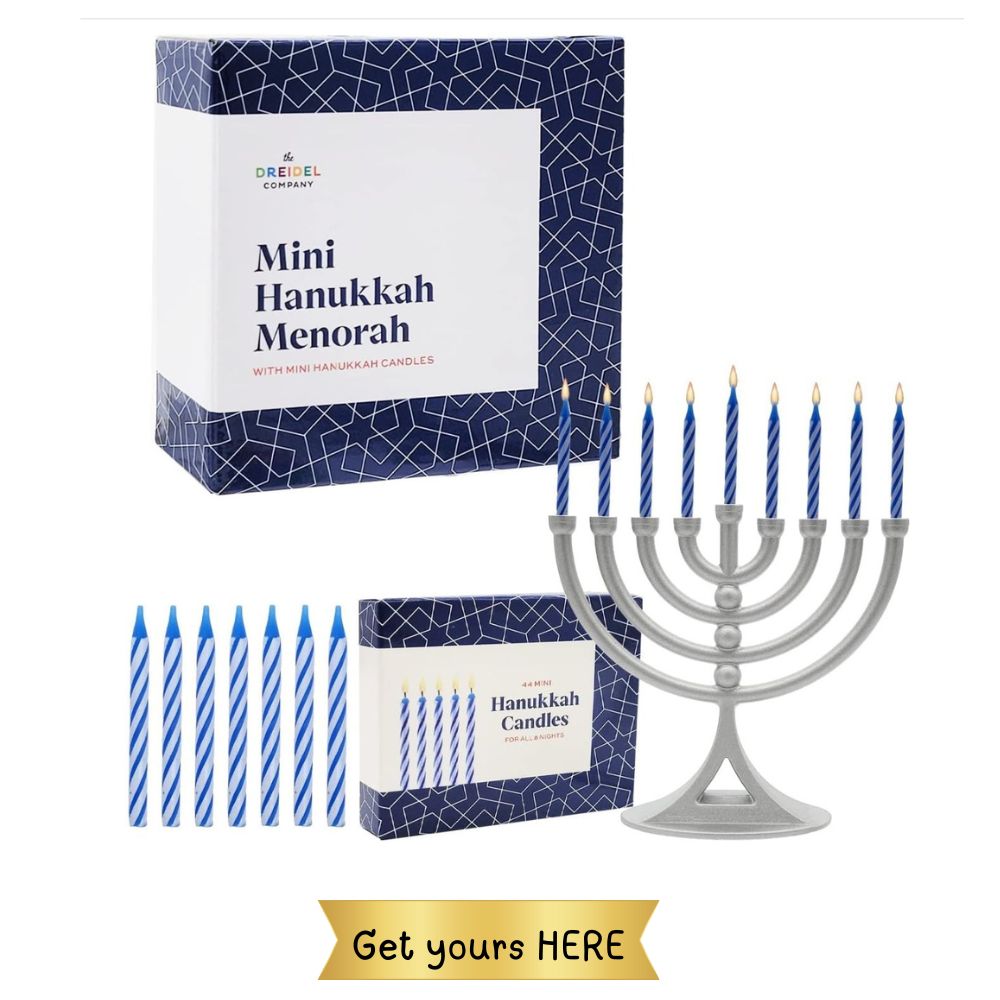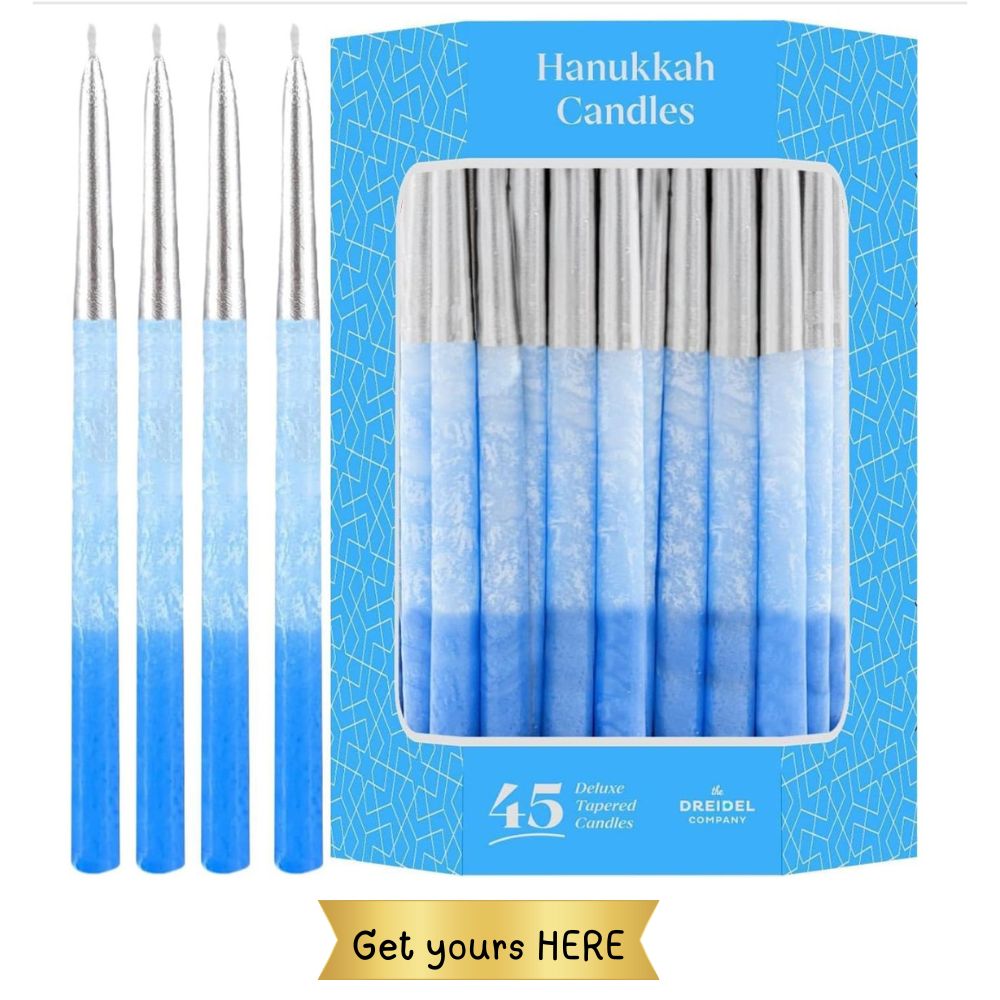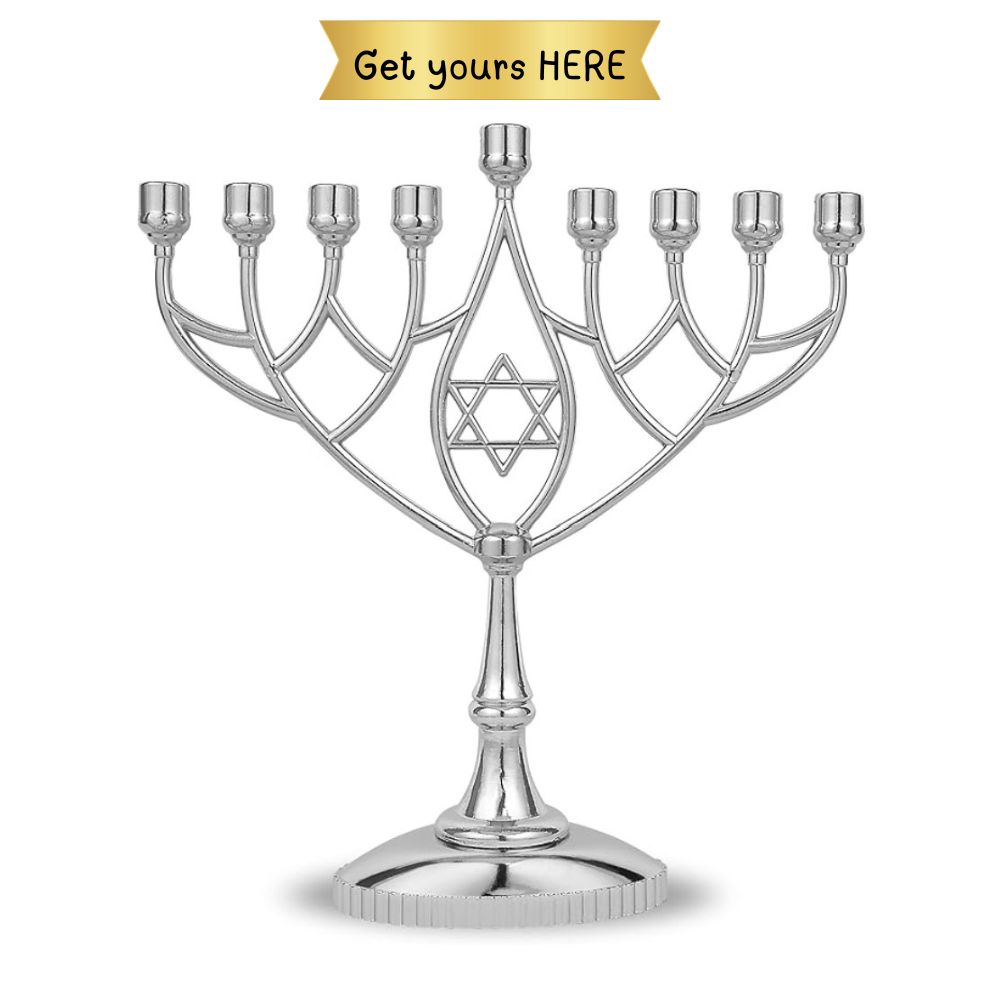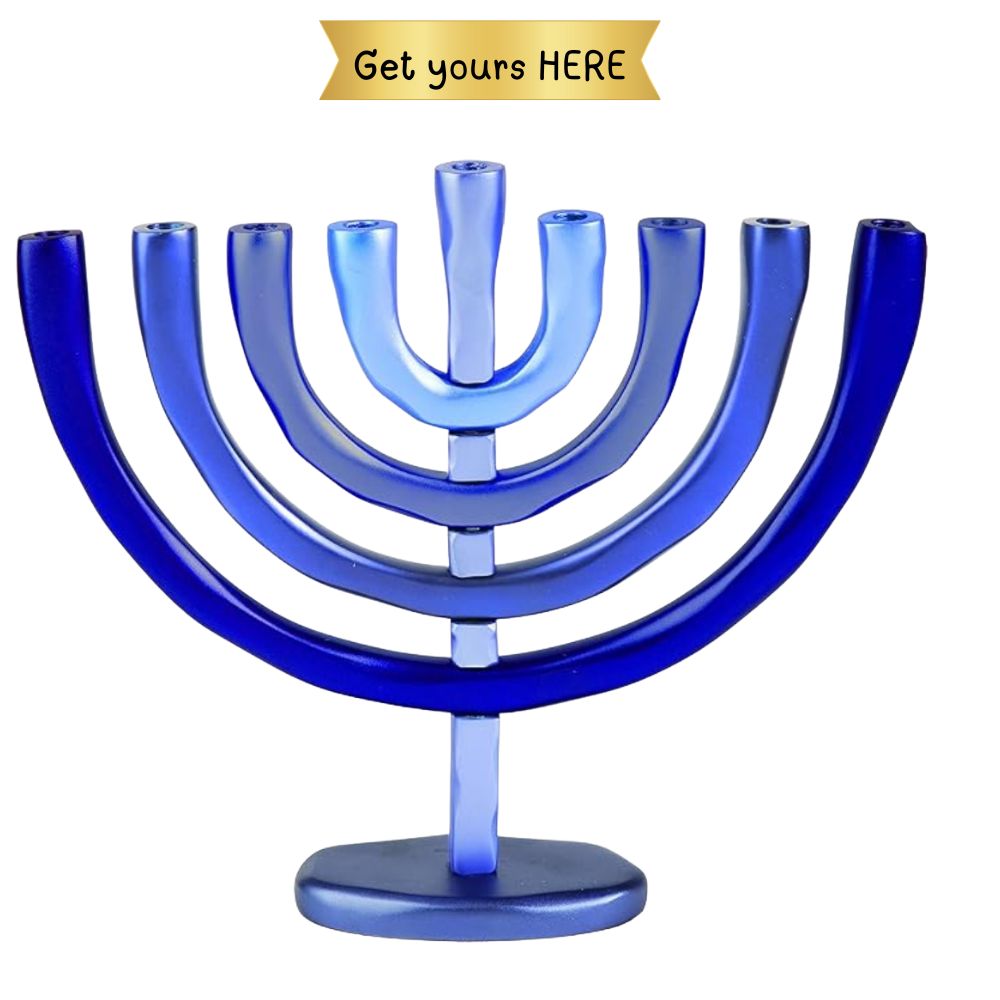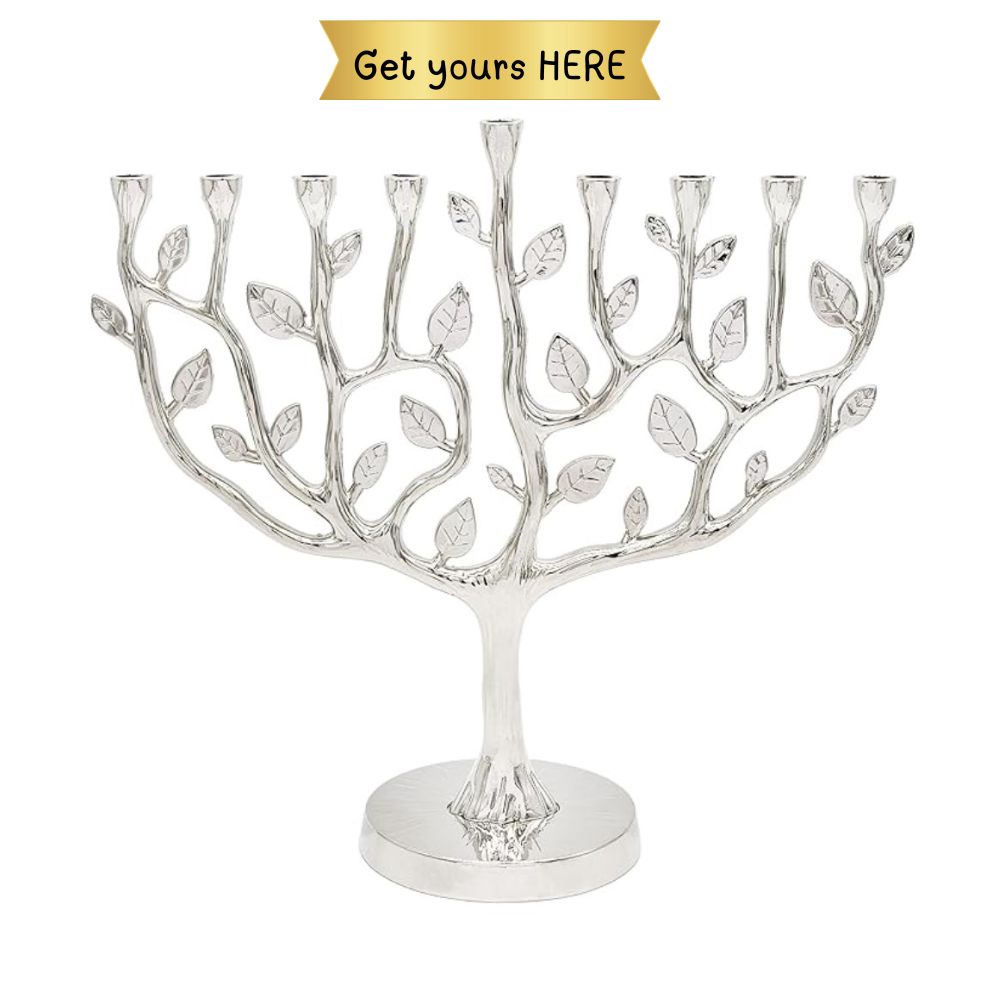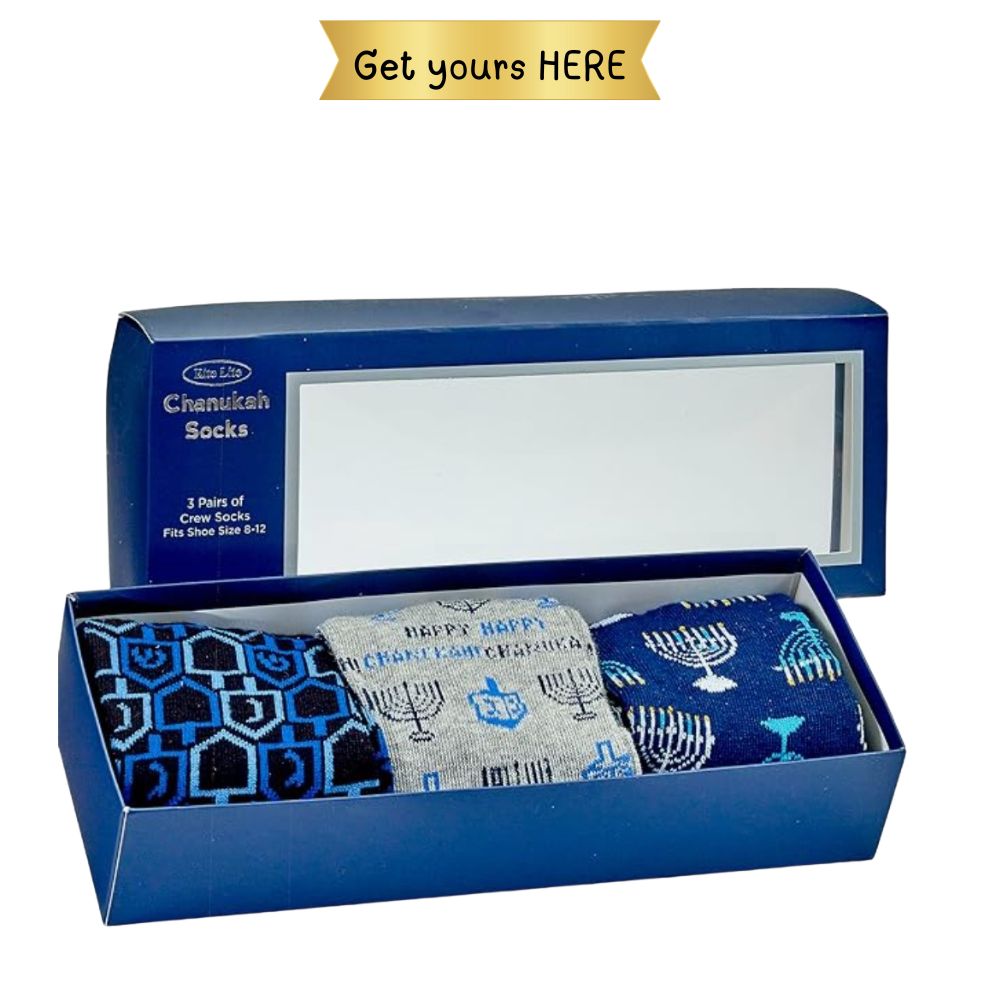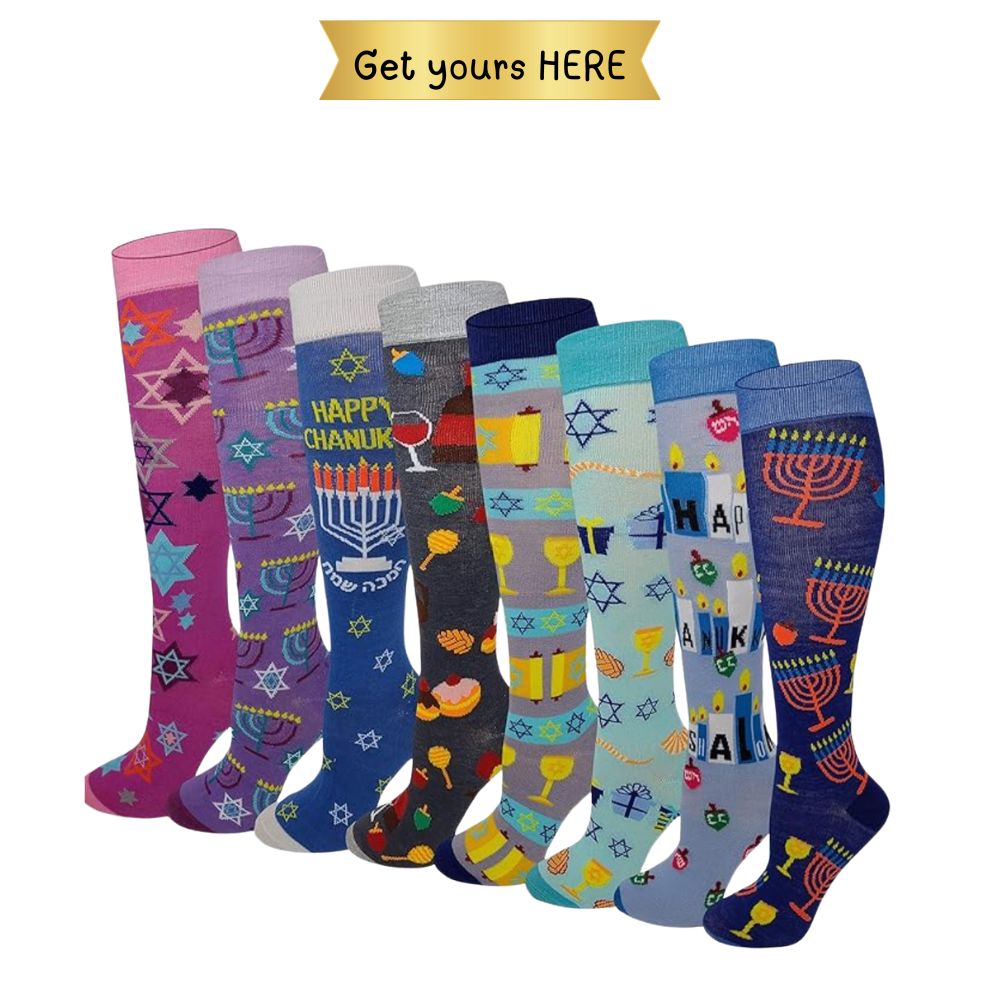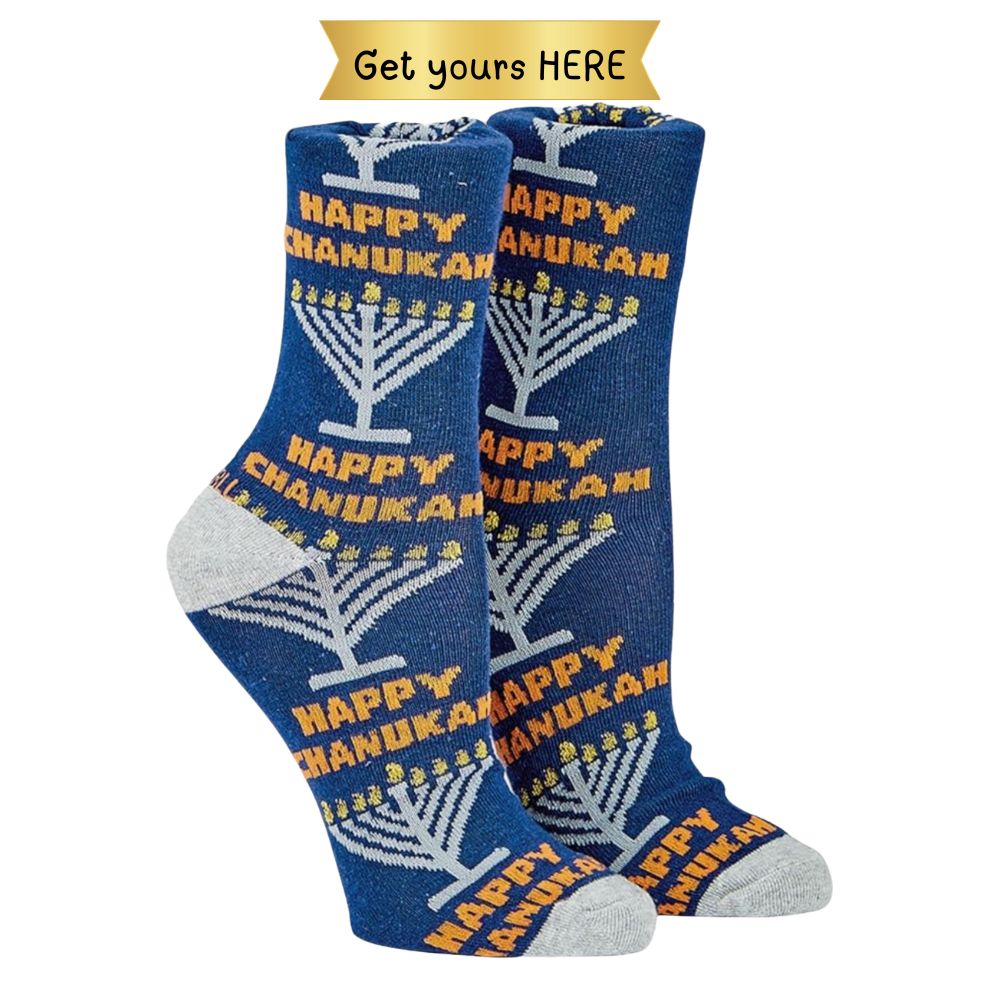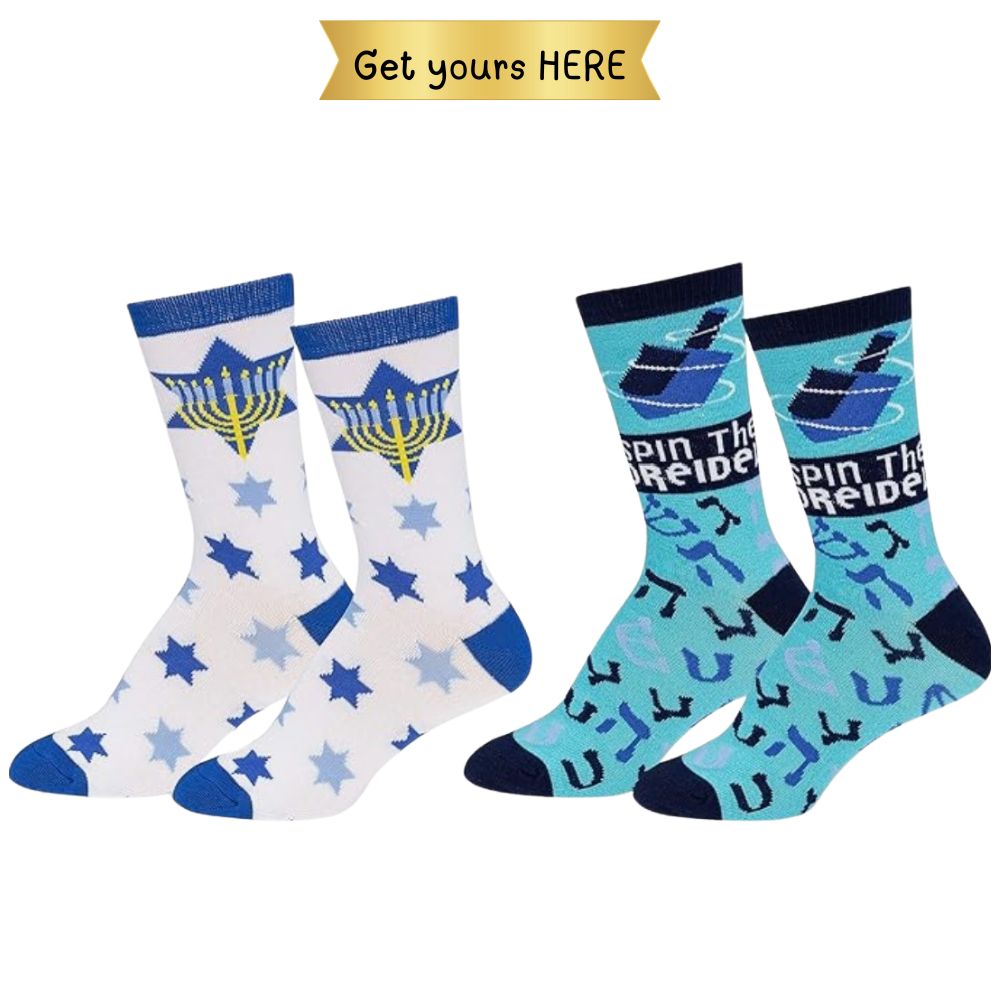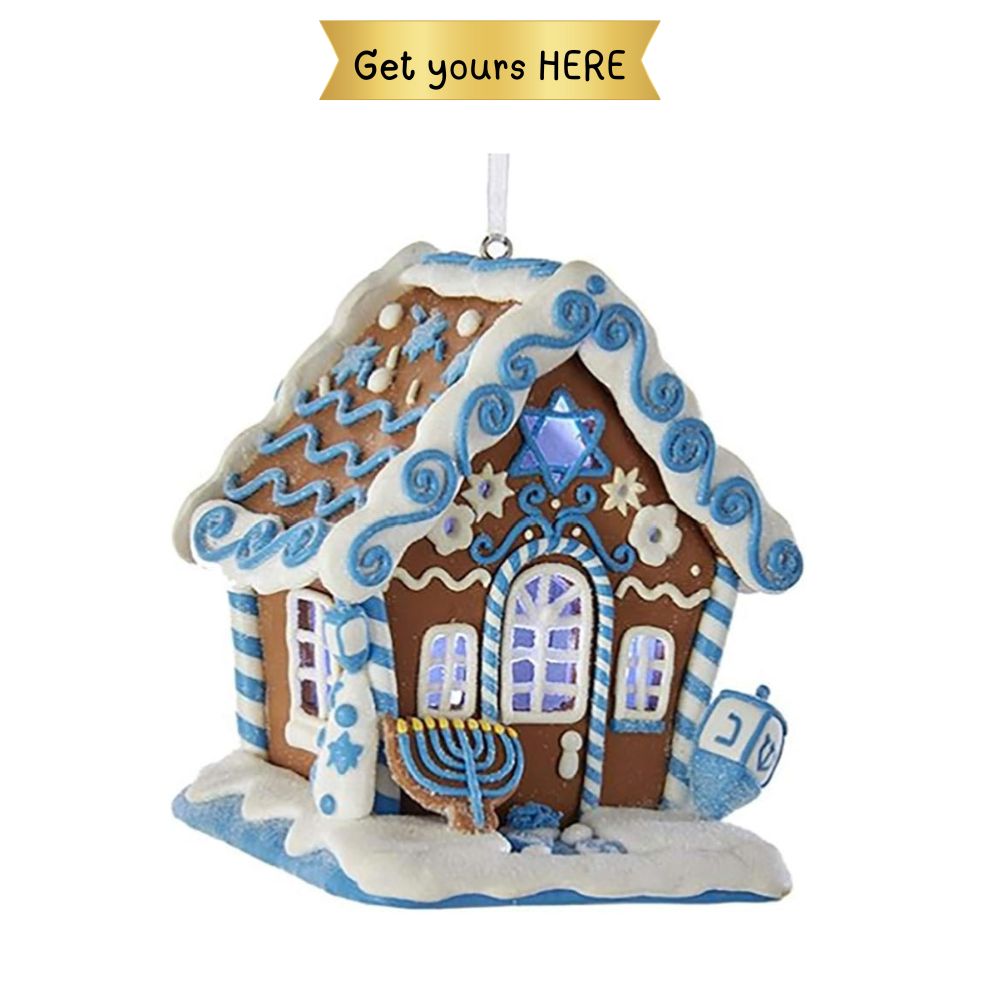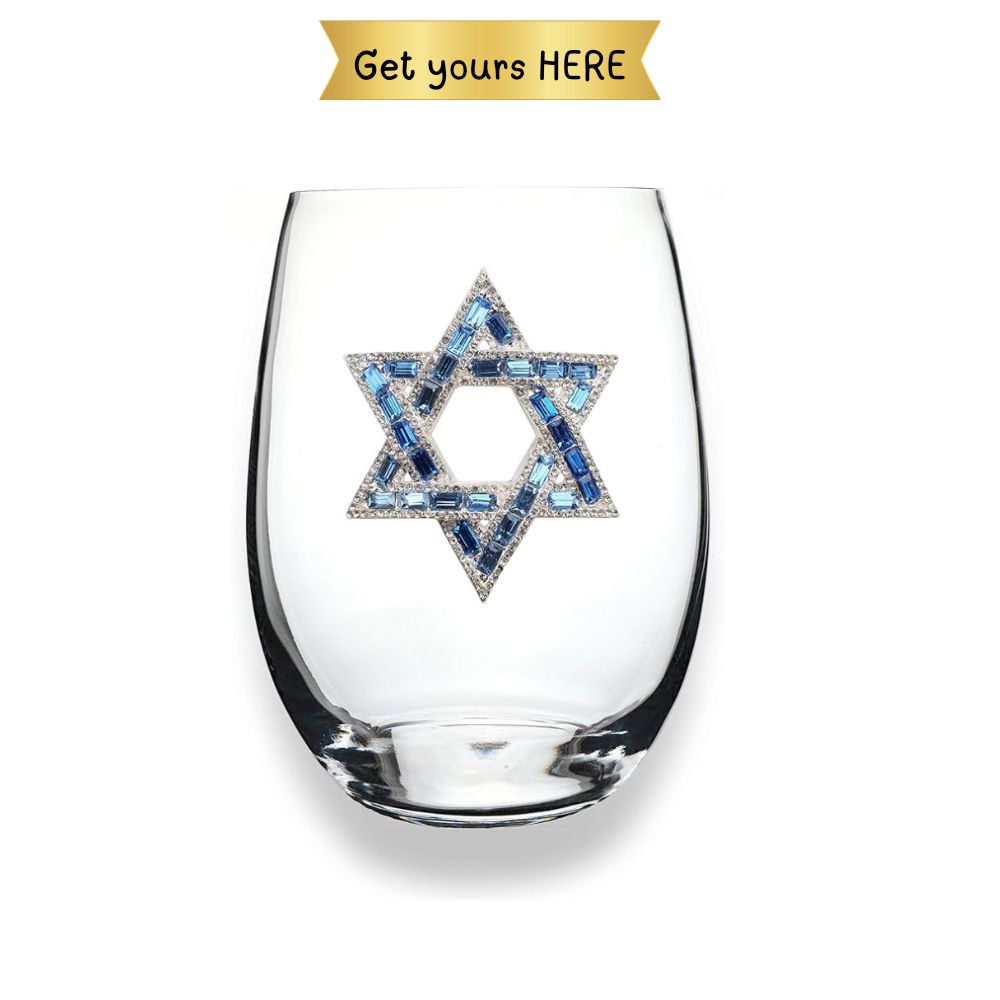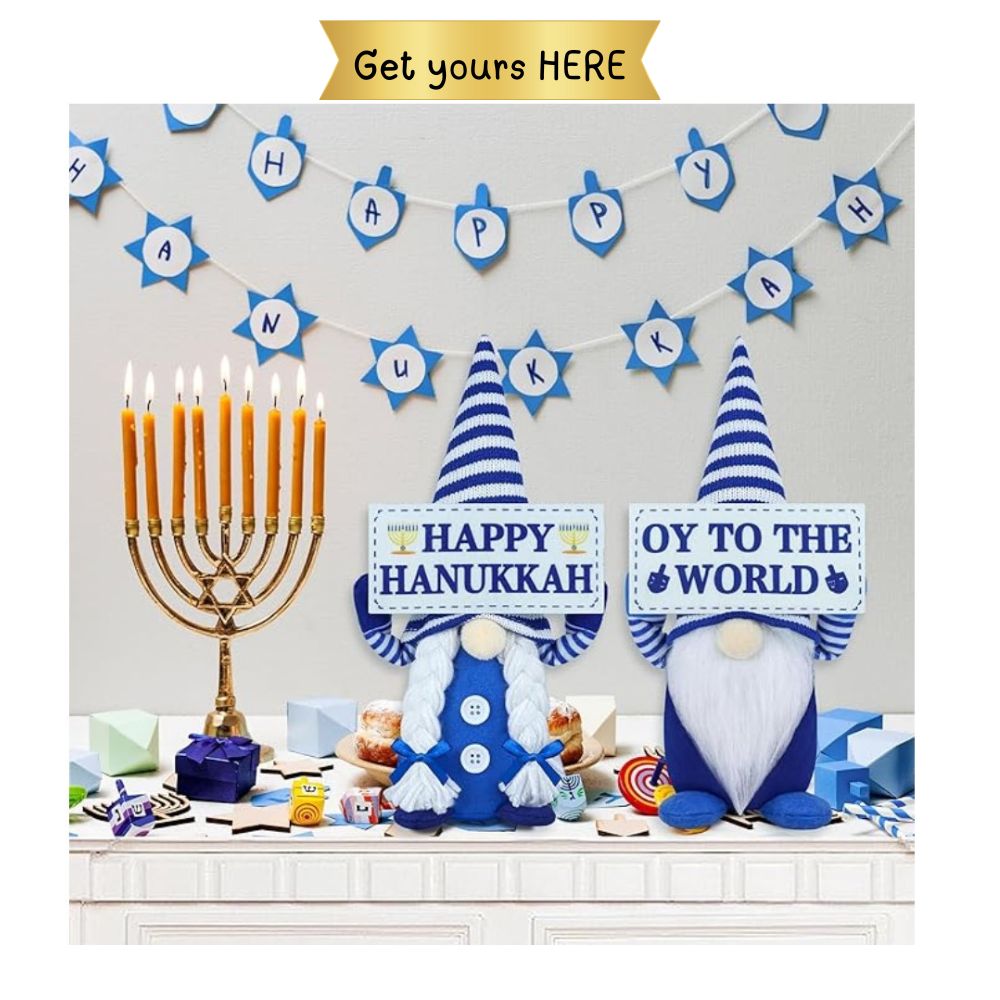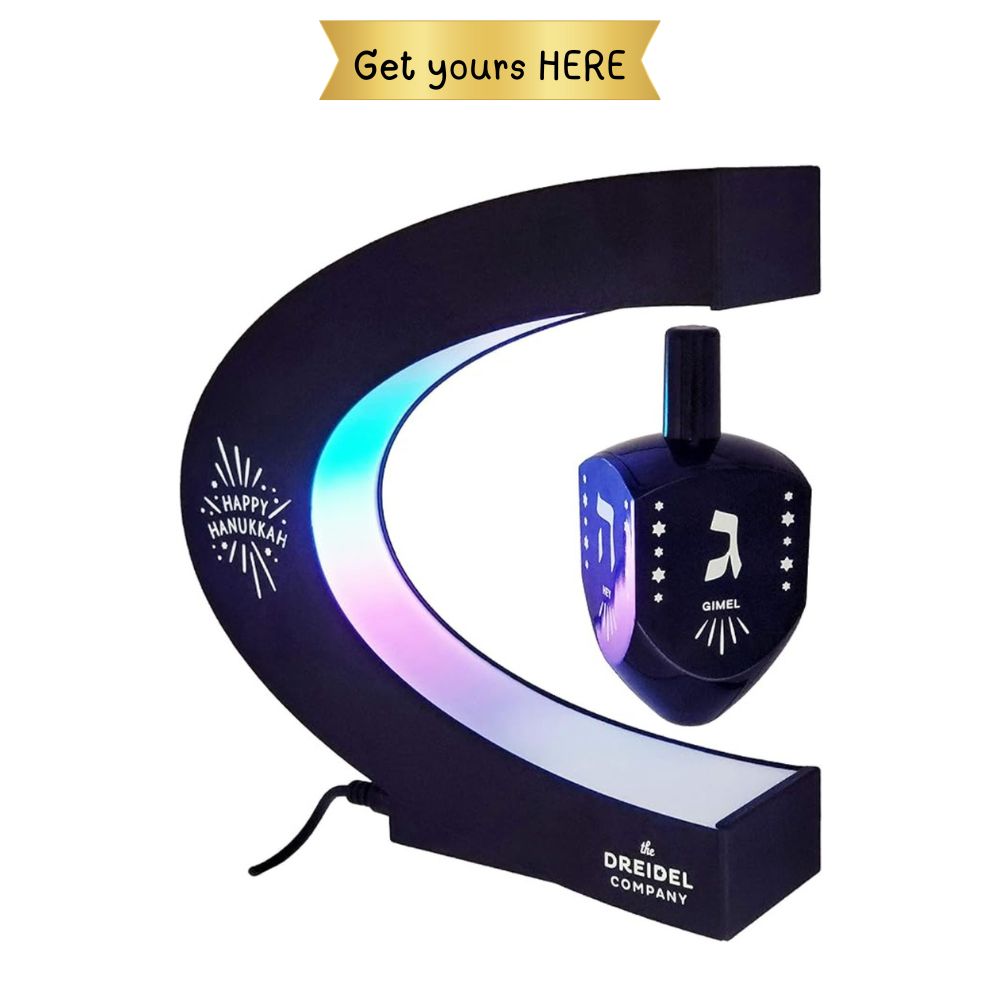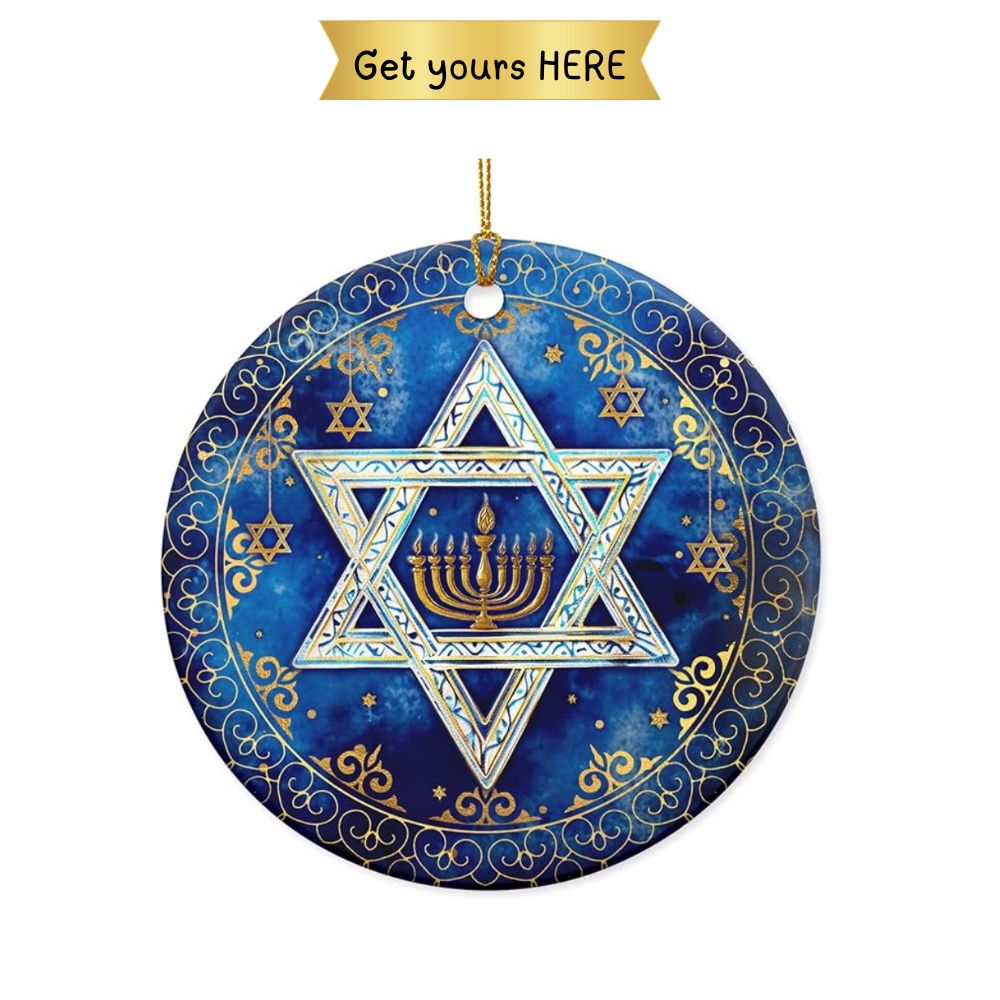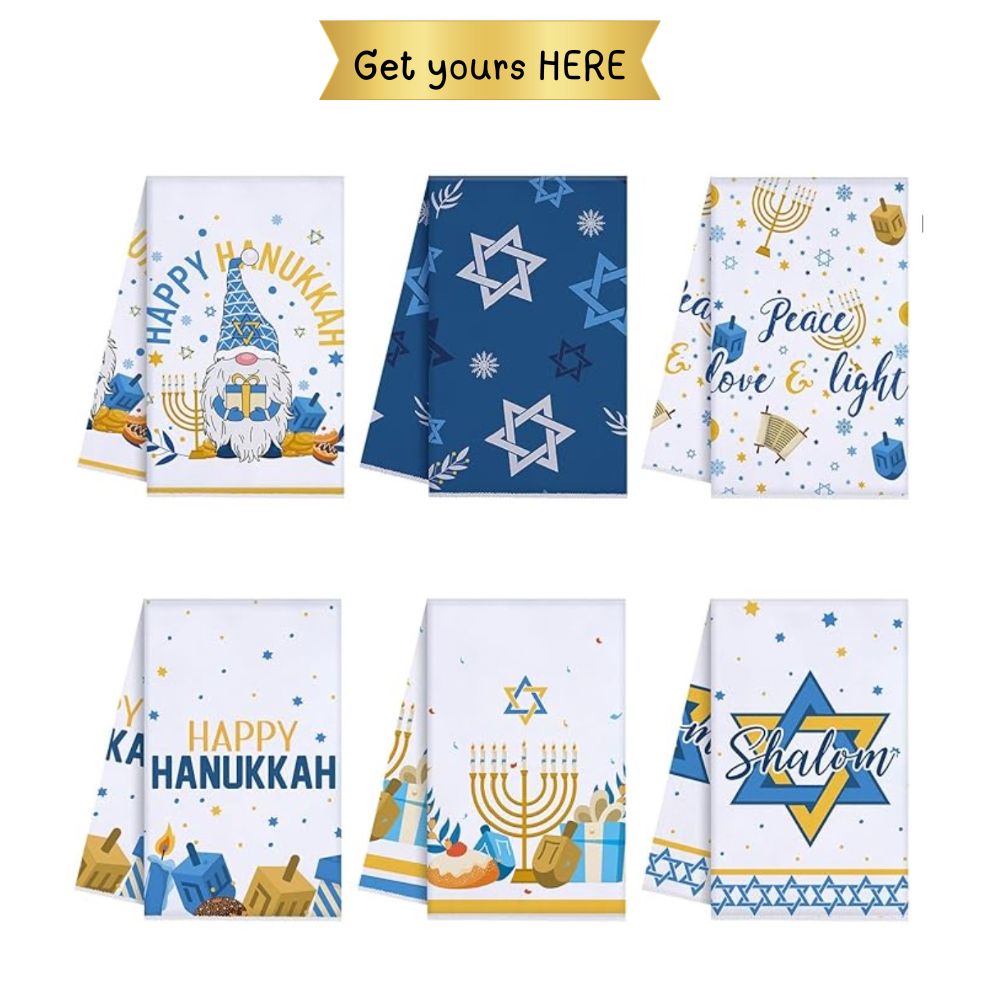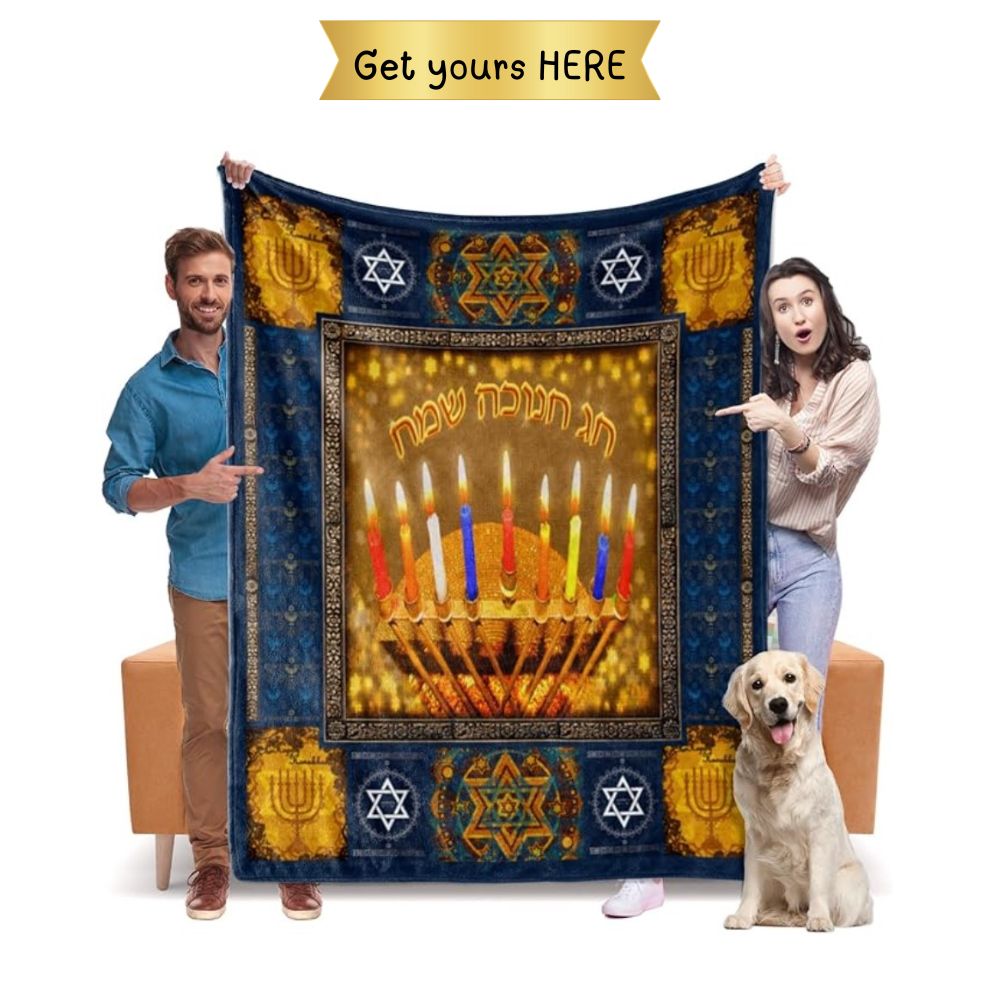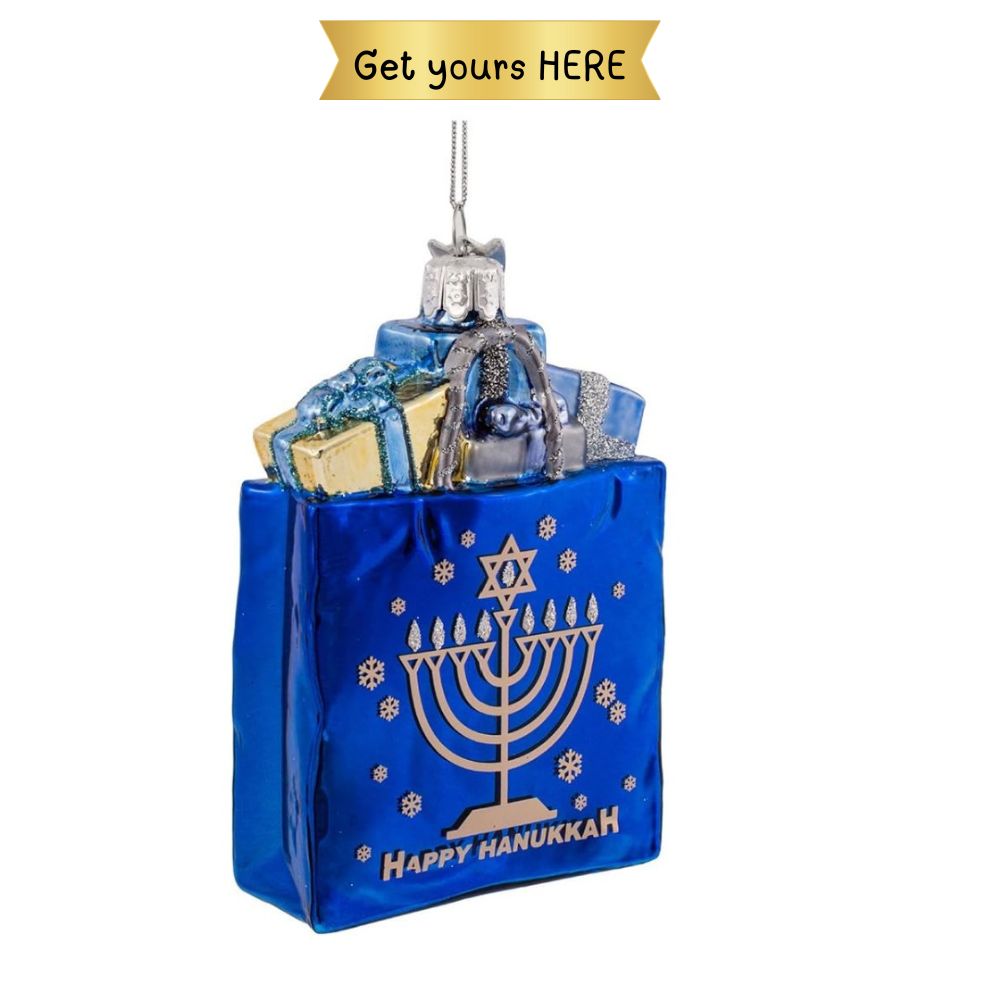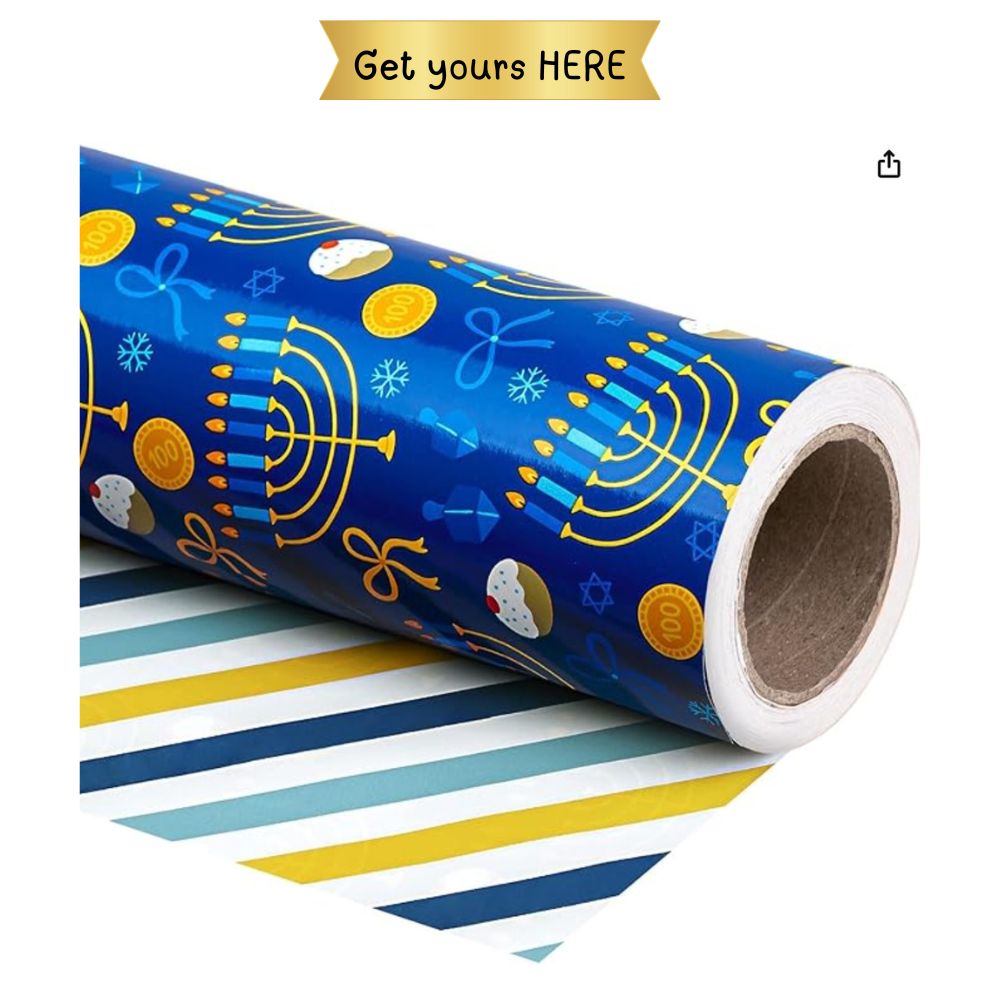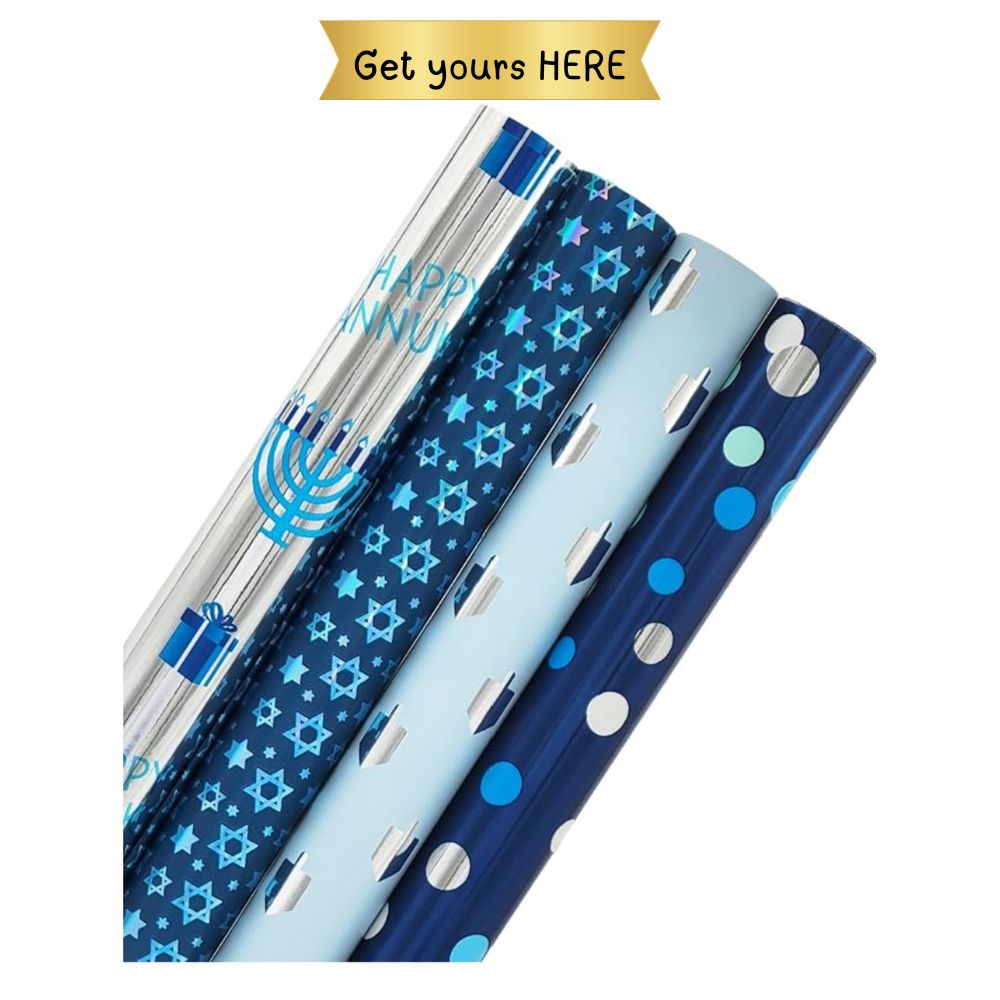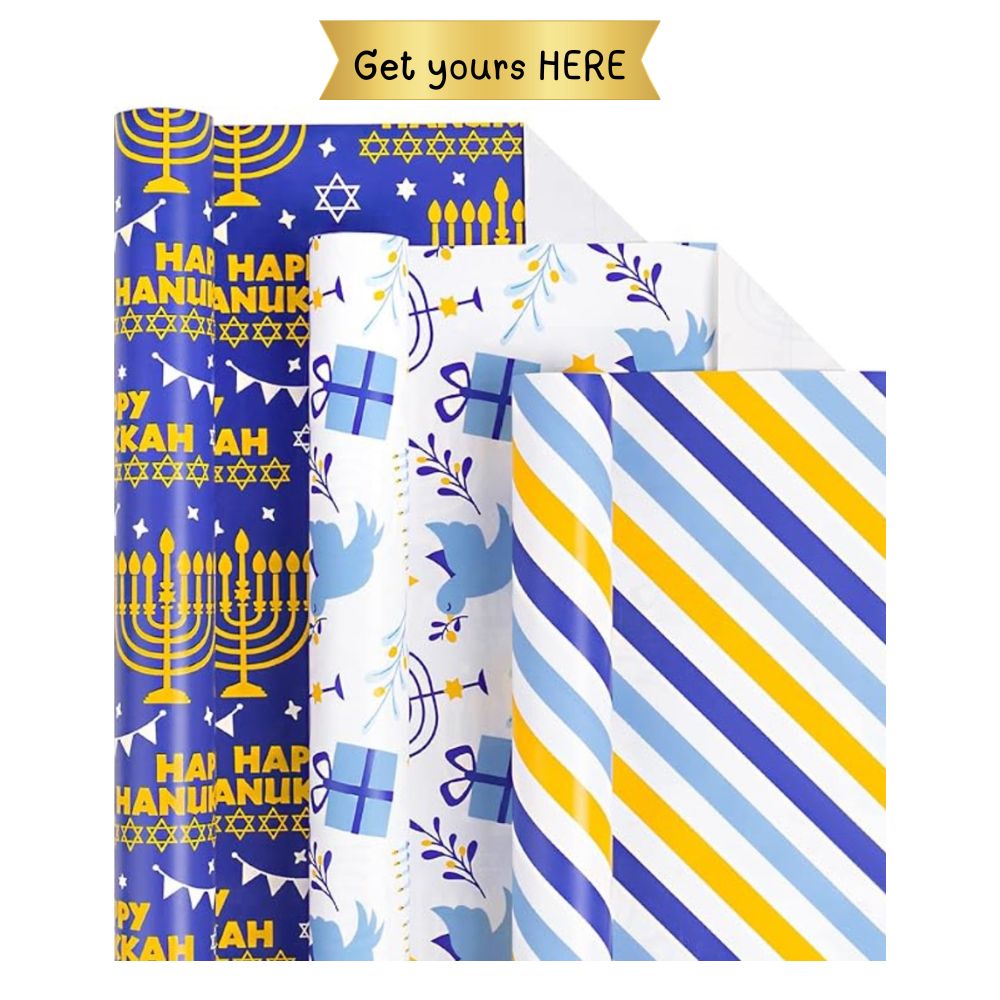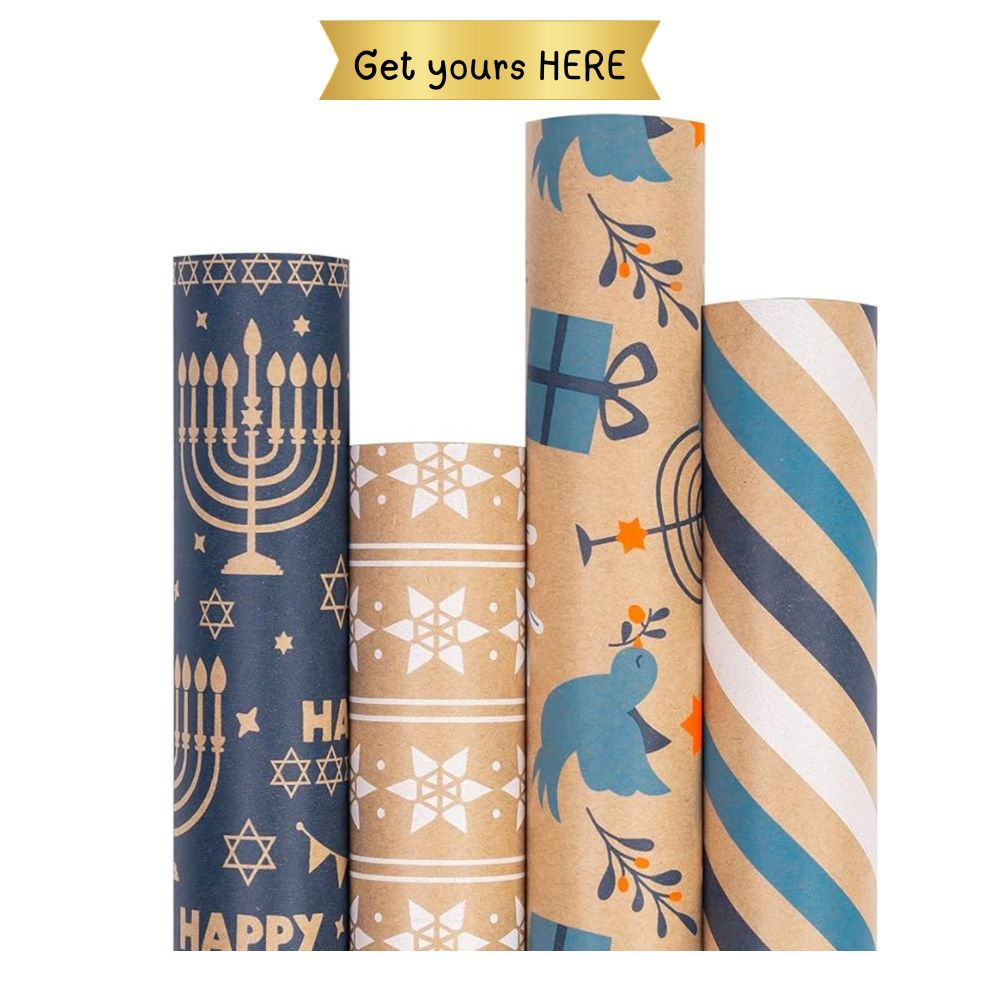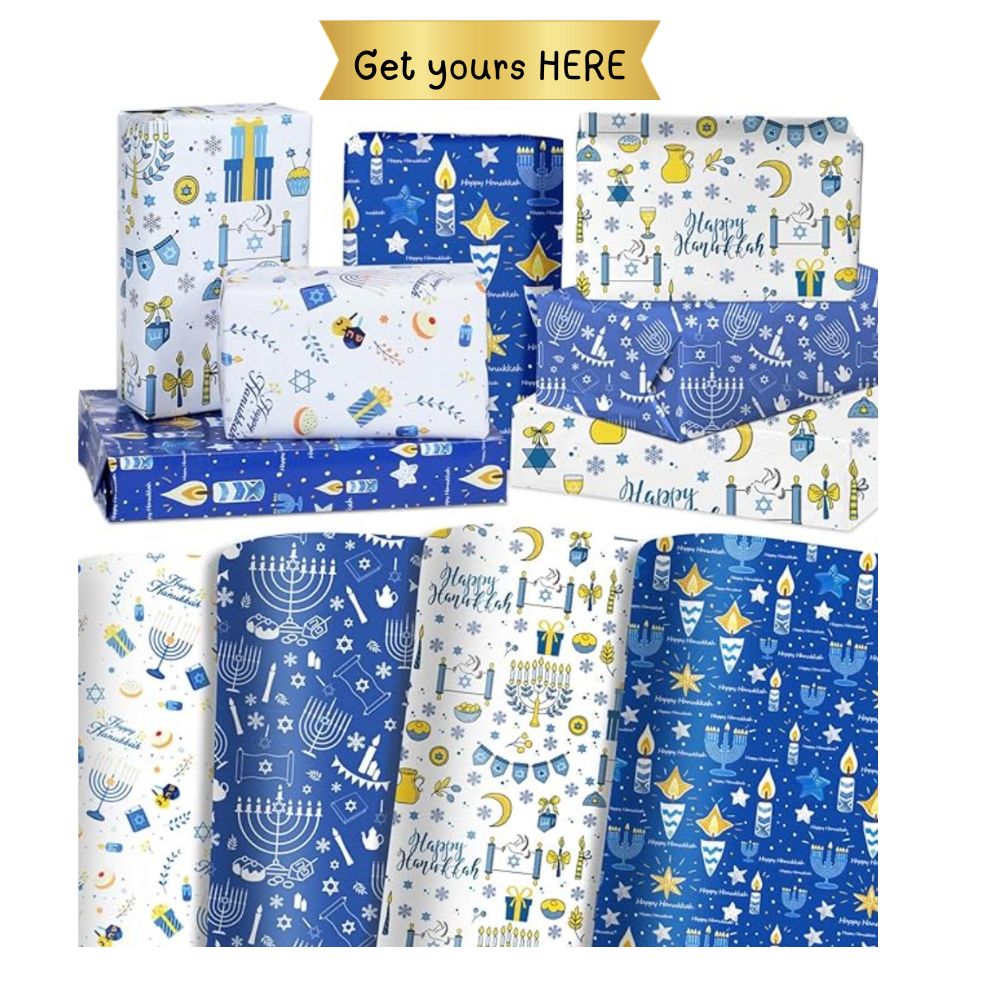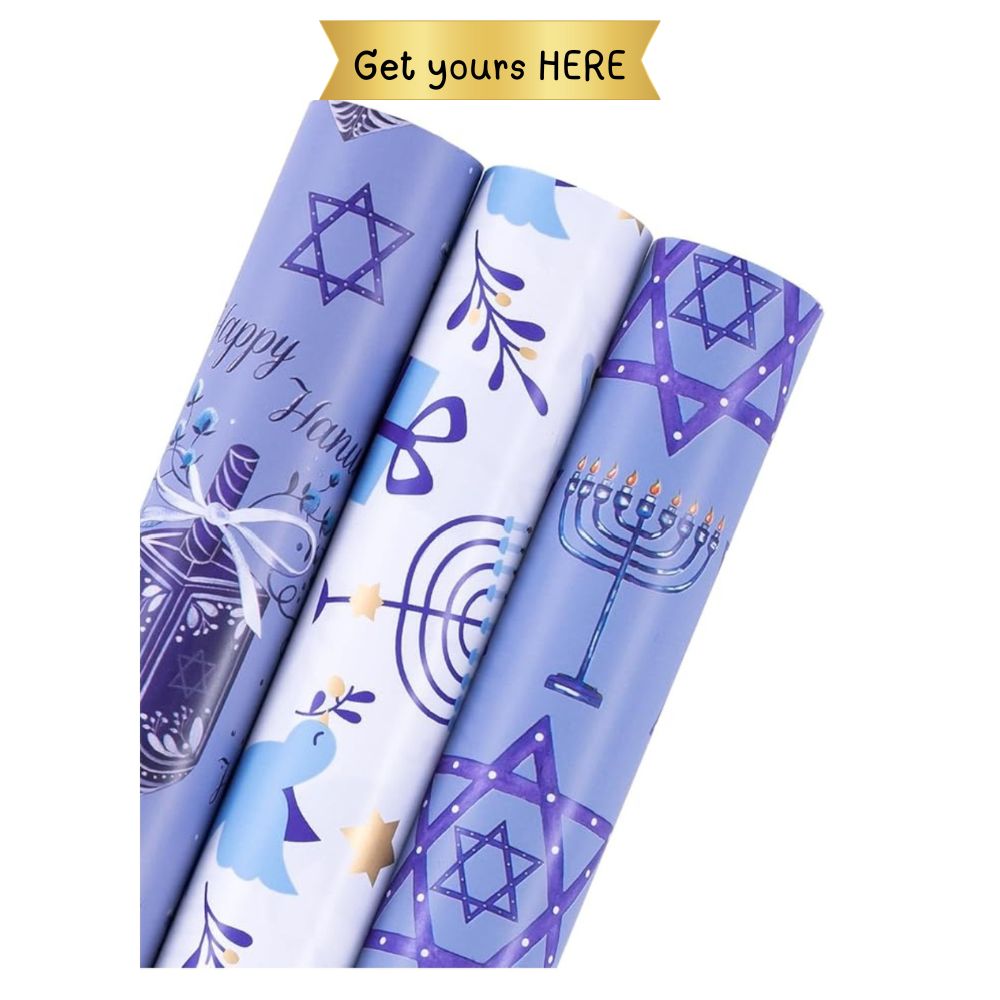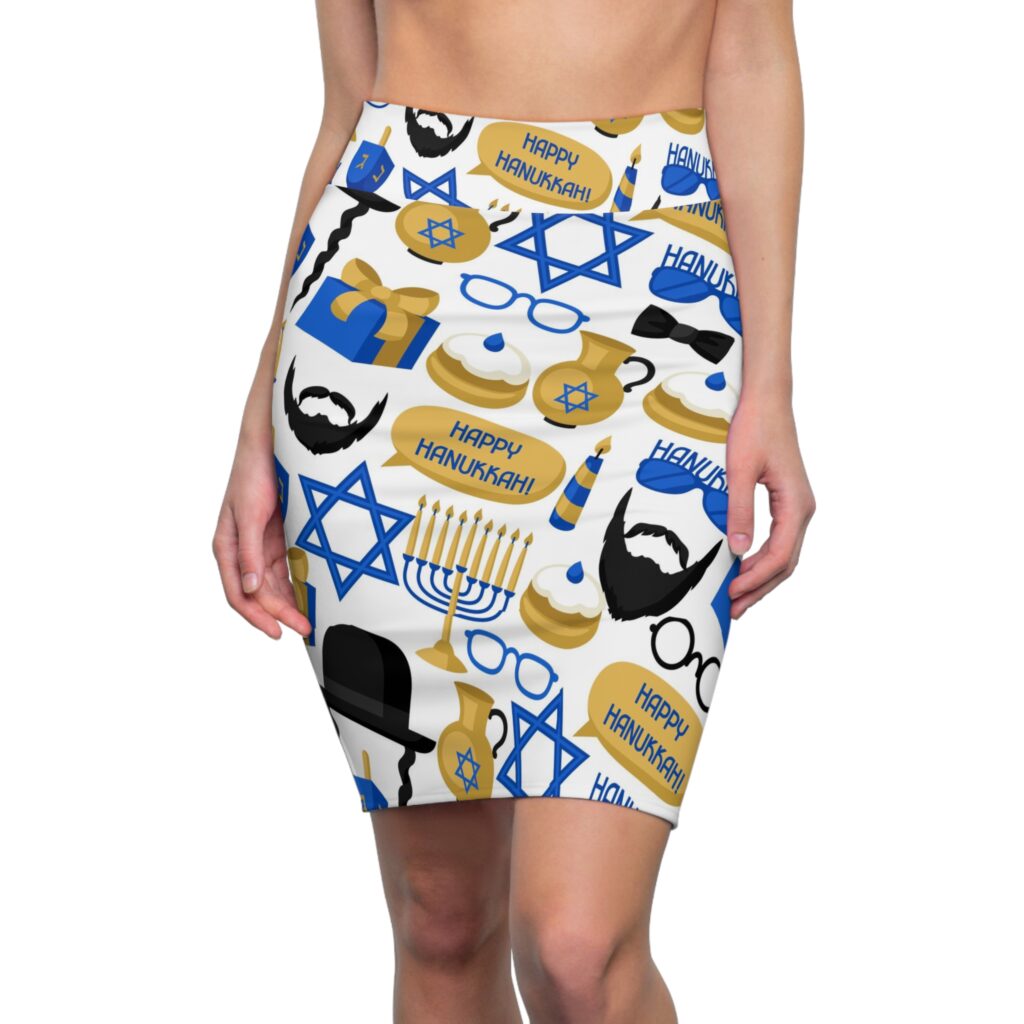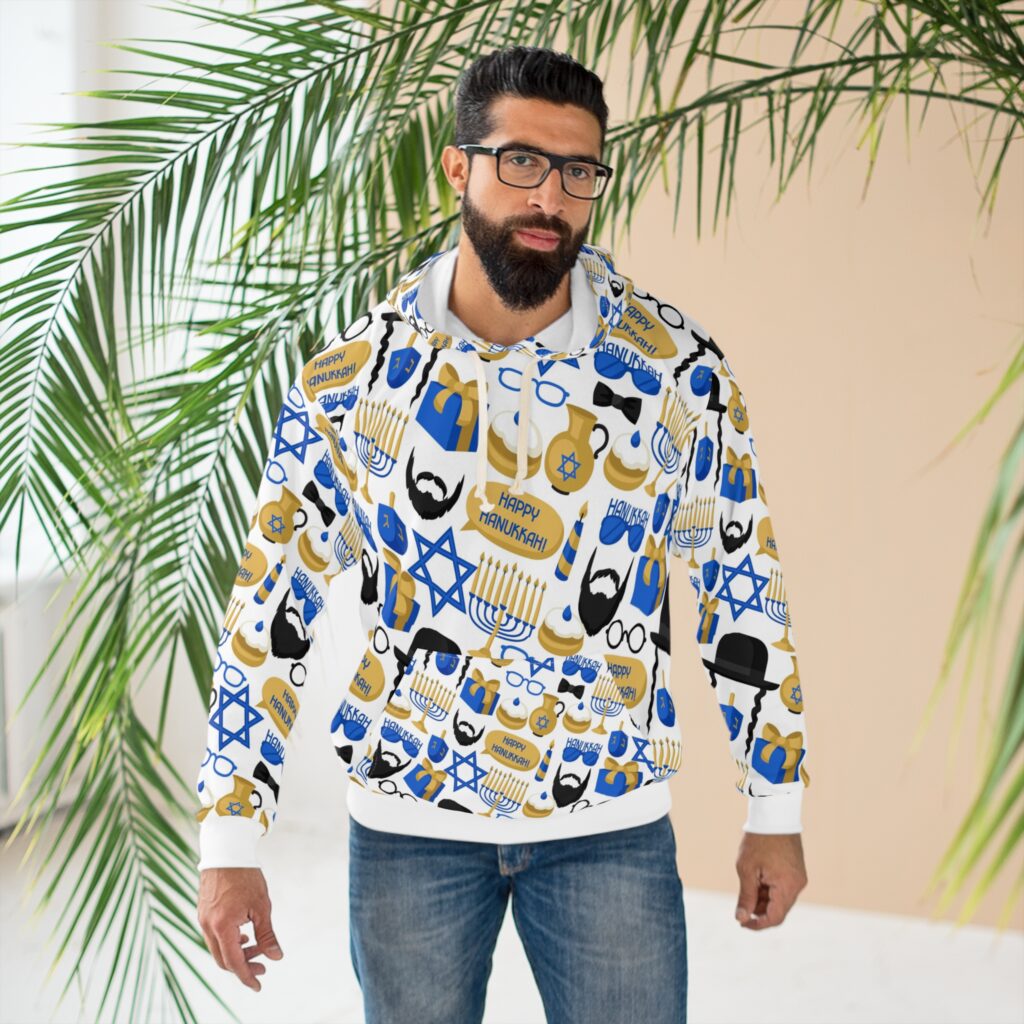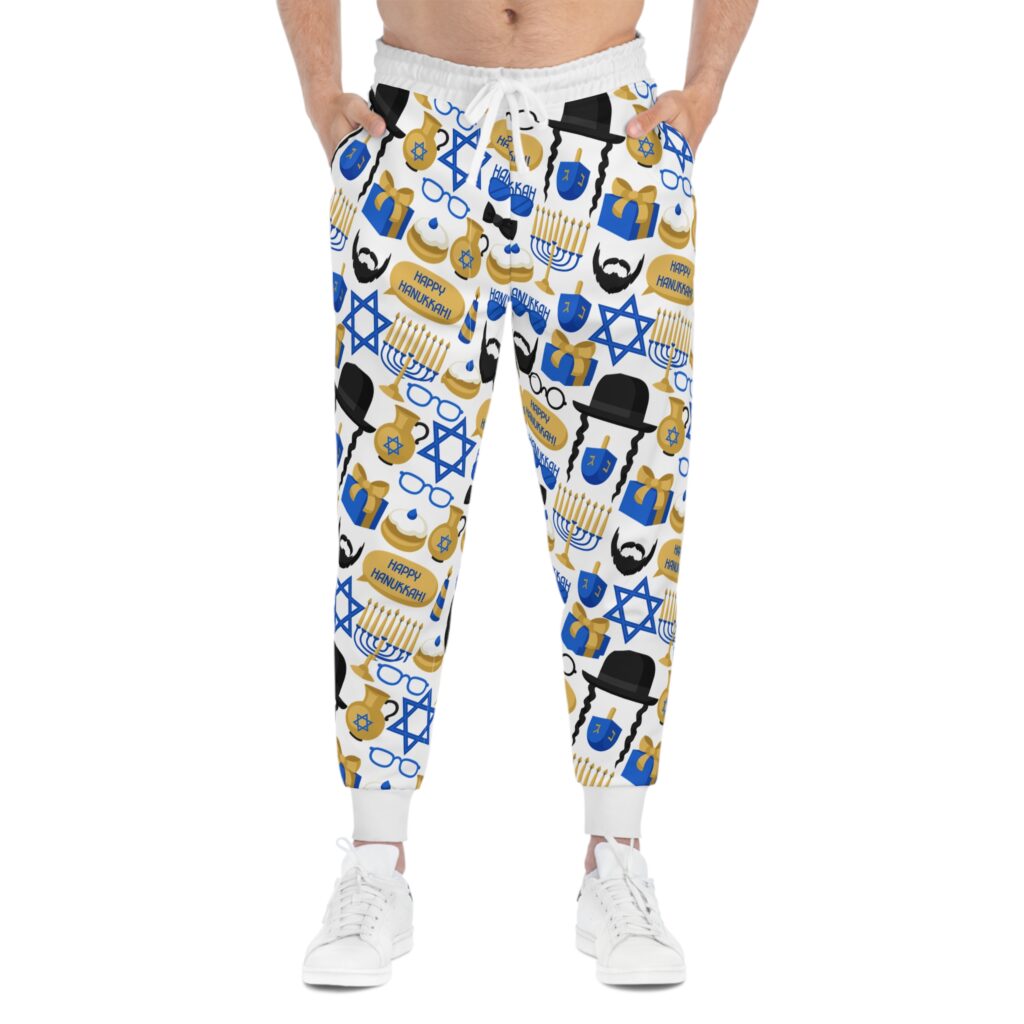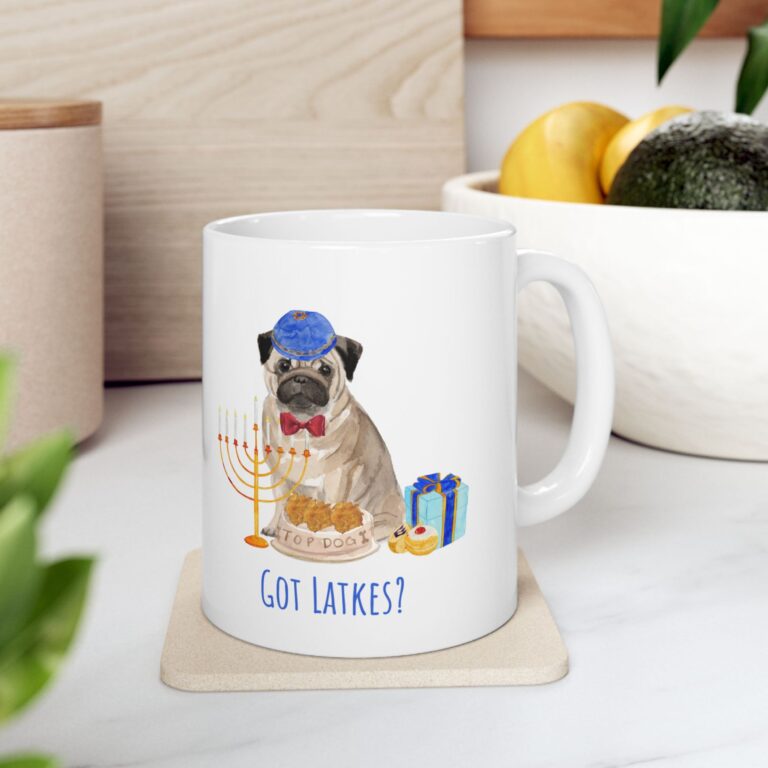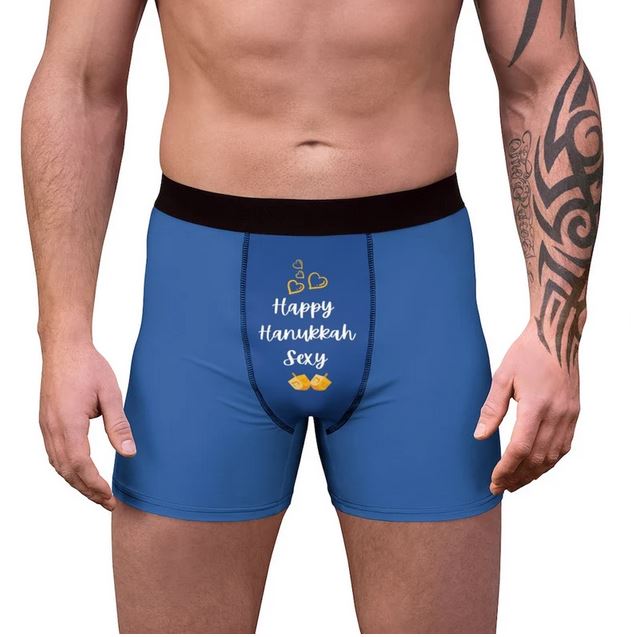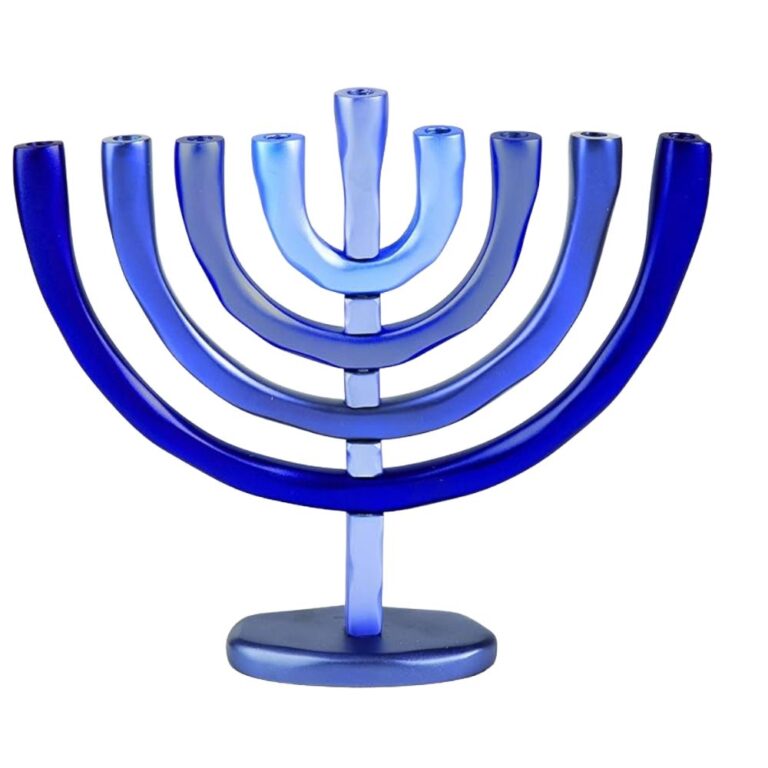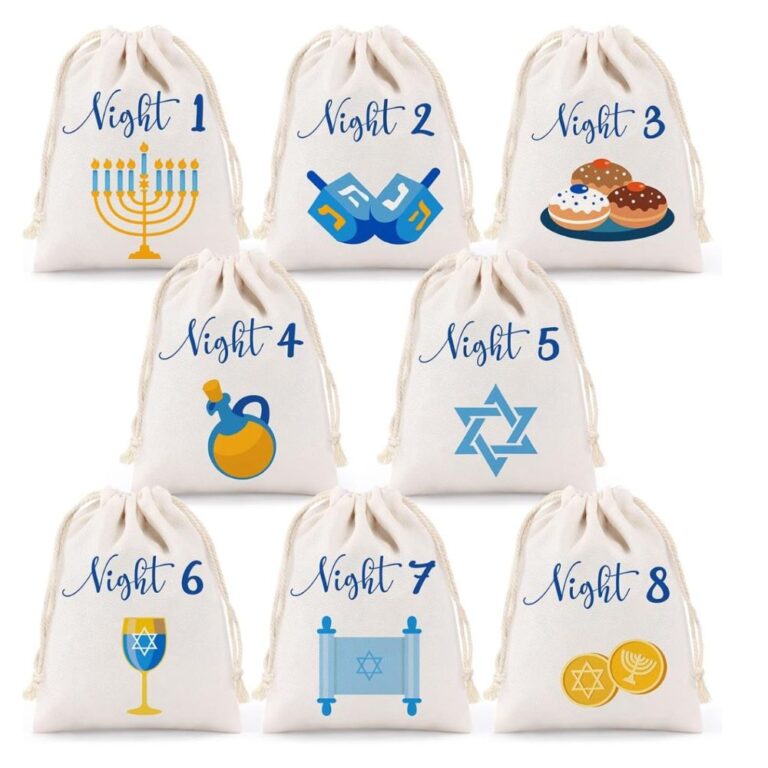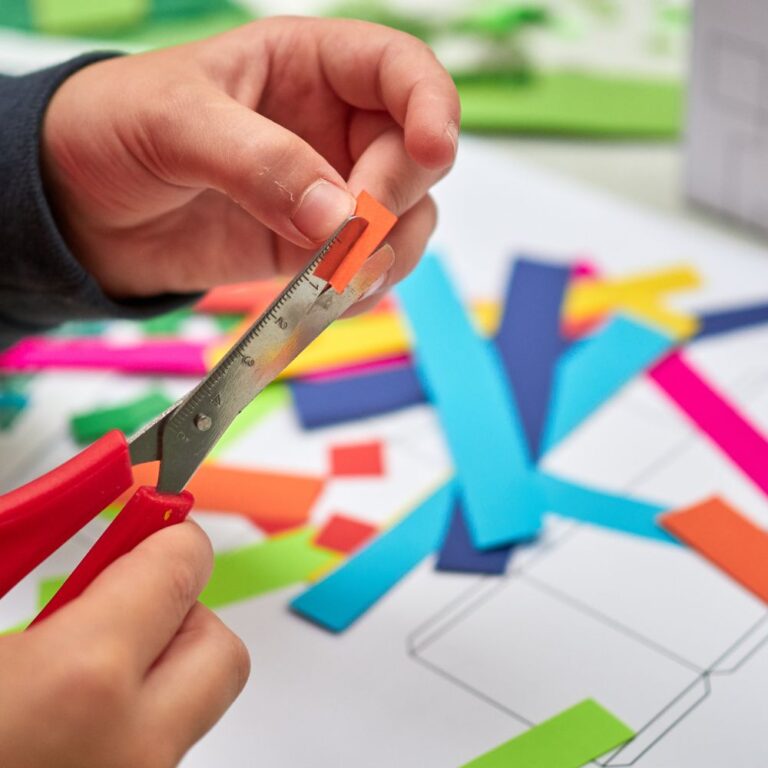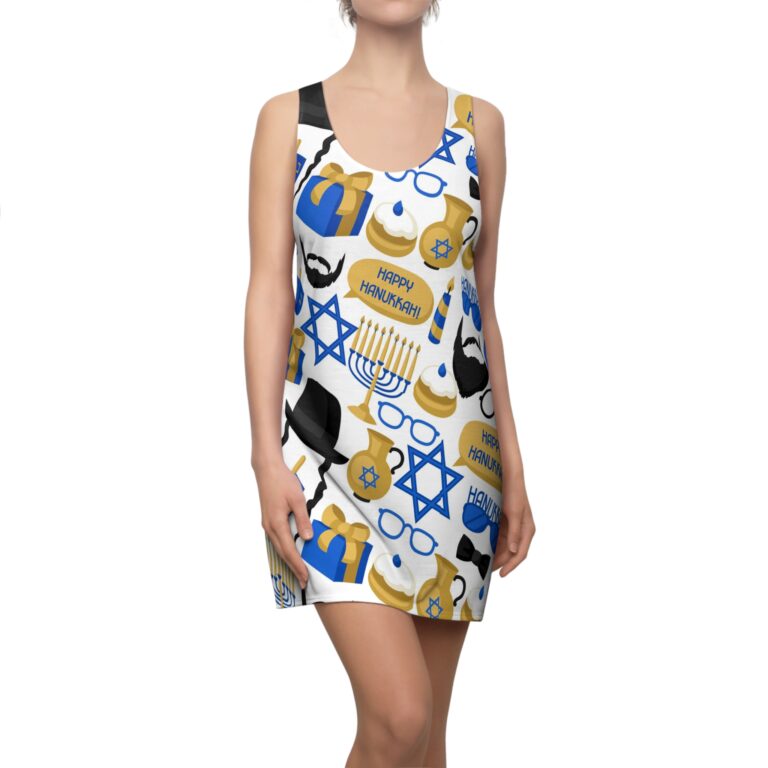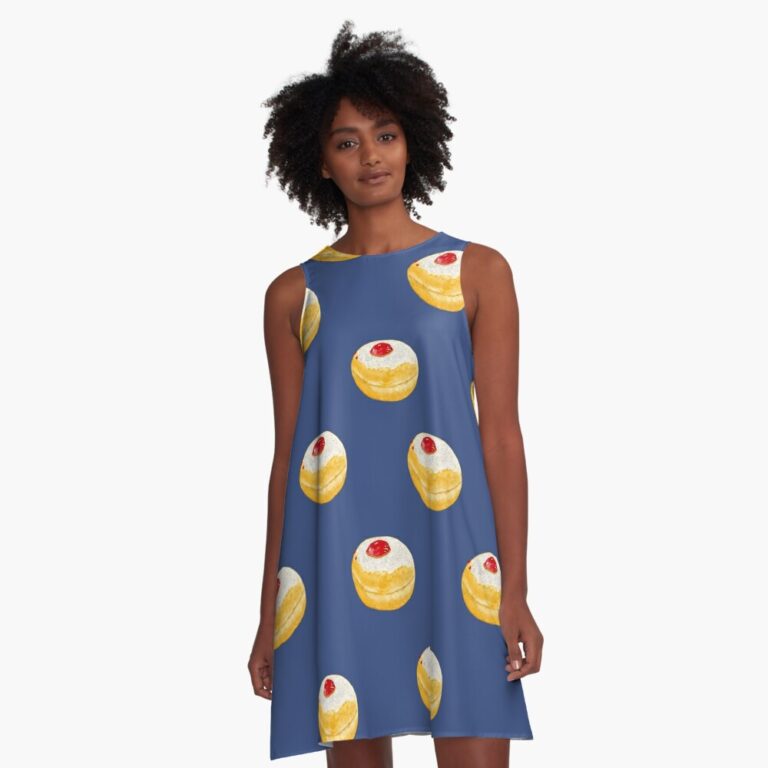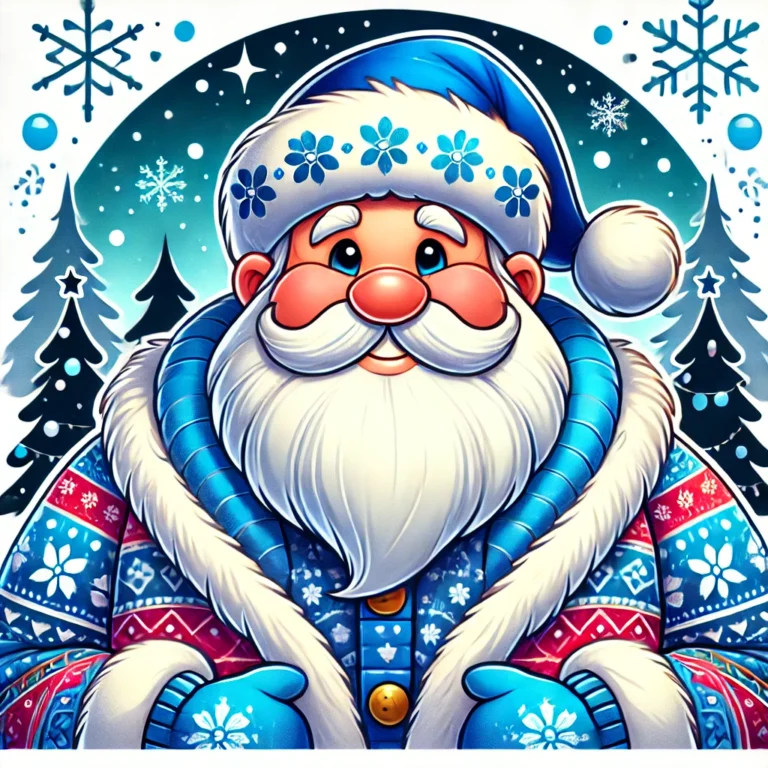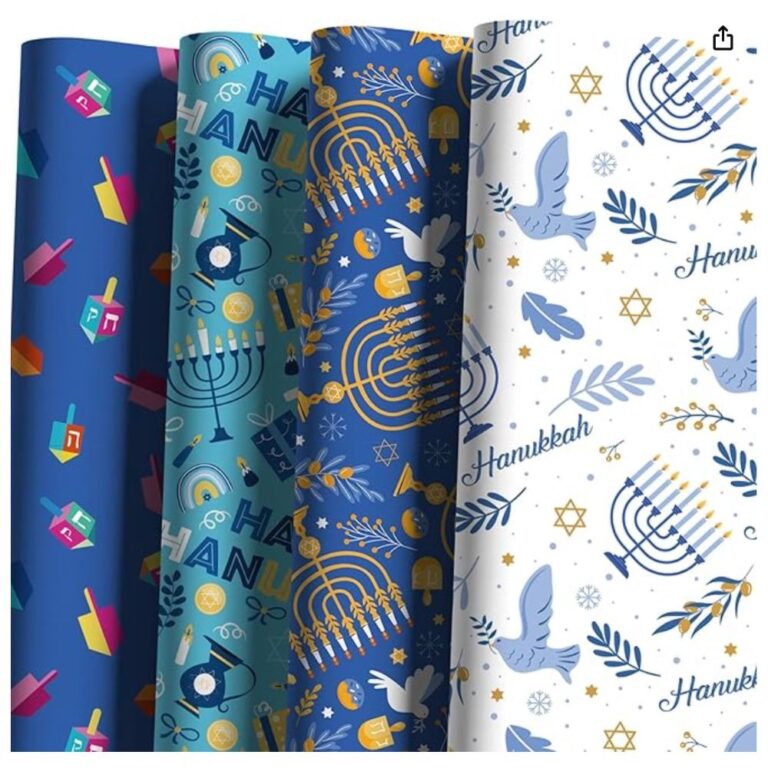Hanukkah and Chanukkah refer to the same holiday. The difference lies in the English transliteration of the Hebrew word “חנוכה.” Since Hebrew letters don’t have exact equivalents in English, there are multiple ways to spell the holiday’s name. “Hanukkah” and “Chanukkah” are both common spellings, with “Hanukkah” being more popular in the U.S. Both terms celebrate the same Jewish holiday, which commemorates the rededication of the Second Temple in Jerusalem and the miracle of the oil that lasted eight days.
Your Hanukkah questions answered....
Table of Contents
What are the Hanukkah Colors?


The colors blue and white are commonly associated with Hanukkah due to their connection to Jewish tradition and symbolism. Here’s why:
Tallit (Jewish Prayer Shawl): The traditional Jewish prayer shawl, or tallit, often has blue and white stripes. The blue, called tekhelet in Hebrew, was historically made from a rare dye and used in religious garments, signifying holiness and divinity. The tallit is a symbol of Jewish identity and faith, which resonates with Hanukkah’s themes of religious freedom and dedication.
Israeli Flag Influence: The Israeli flag, which is blue and white, draws from the colors of the tallit and reflects Jewish national pride. Since Hanukkah celebrates Jewish resilience and cultural survival, these colors align with the holiday’s themes of identity and unity.
Symbolism of Blue and White: Blue represents spirituality, tranquility, and the heavens, while white signifies purity, peace, and light. These values resonate with Hanukkah’s story of miracles, hope, and dedication.
So, while blue and white aren’t explicitly part of the Hanukkah story, these colors have become embraced as a way to celebrate Jewish identity and the holiday’s significance.
What are Hanukkah Candles Called?
Hanukkah candles are called “Hanukkah candles” or “Chanukah candles”, often simply referred to as “Hanukkah lights.” They are traditionally lit in a menorah which is also known as a hanukkiah. This nine-branched candelabrum holds one candle for each night of Hanukkah, plus the shamash (helper candle) used to light the others.
Hanukkah Candles
Are there Hanukkah movies?
Yes, there are several Hanukkah movies, though they are fewer in number compared to Christmas films. These movies typically celebrate themes of family, tradition, and the spirit of Hanukkah. Here are some popular ones:
1. Eight Crazy Nights – An animated comedy featuring Adam Sandler, following the story of a man who finds redemption during Hanukkah.
2. The Hebrew Hammer – A comedic, action-packed parody featuring a Jewish superhero who saves Hanukkah.
3. Full-Court Miracle – A family-friendly Disney movie inspired by a true story, focusing on a Jewish basketball player who connects the Hanukkah miracle to his own life.
4. An American Tail – Although not strictly a Hanukkah movie, this animated classic includes a touching Hanukkah scene and themes of Jewish immigration.
5. Love, Lights, Hanukkah!– A Hallmark holiday romance about a woman who learns of her Jewish heritage and celebrates her first Hanukkah.
Some streaming platforms also feature Hanukkah specials within shows or new holiday releases celebrating Hanukkah traditions. These movies offer a festive mix of humor, warmth, and the holiday spirit!

How are Hanukkah candles lit?
During Hanukkah, the menorah (or hanukkiah) is lit each night to commemorate the miracle of the oil lasting eight days in the ancient Temple. The lighting follows a specific order:
1. Shamash Candle First: The central candle, called the shamash (or “helper” candle), is lit first. This candle is used to light the other candles and is placed higher or set apart from the others.
2. Adding Candles: Each night, a new candle is added to the menorah from right to left. So, on the first night, one candle is added, then two on the second night, and so forth until eight candles are present on the eighth night.
3. Lighting the Candles: The candles are lit from left to right, starting with the newest candle added that night. This means the most recently added candle is always lit first, symbolizing increasing joy and light.
4. Blessings: Before lighting the candles, blessings are recited, thanking God for the commandment of lighting the Hanukkah candles and remembering the miracles of Hanukkah.
Once the candles are lit, families often sing Hanukkah songs, play games like dreidel, and enjoy traditional foods like latkes and sufganiyot (jelly donuts). The candles are left to burn down on their own, filling the home with a warm and festive light each night.
The Kosher Hub offers a free printable Hanukkah candle blessing to use over the 8 nights of Hanukkah. This card in English, Hebrew and transliteration helps you teach your children the important blessing for lighting the menorah, creating meaningful moments each night of the Festival of Lights. Make this Hanukkah special by sharing the tradition with your family and deepening their connection to this cherished holiday.
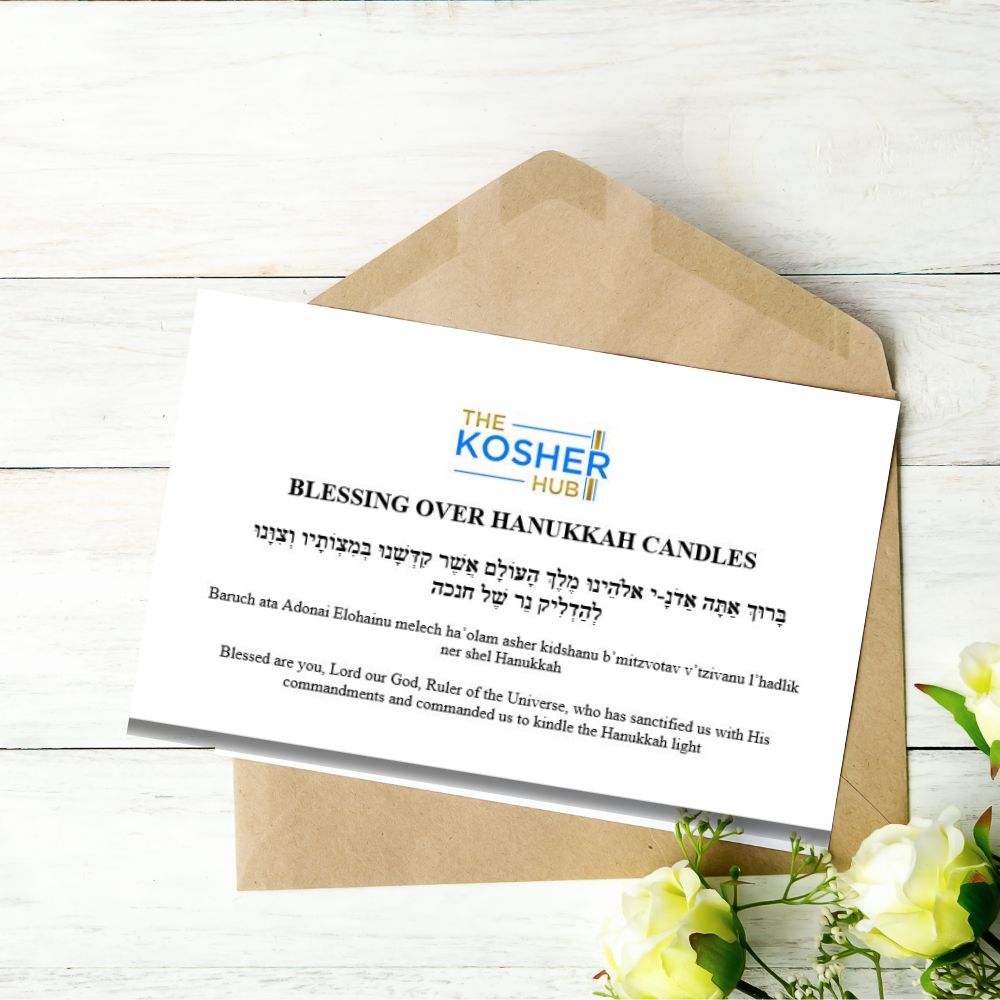
Can Hanukkah be in November?
Yes, Hanukkah can occasionally begin in late November, though it typically falls in December. The timing of Hanukkah is based on the Hebrew calendar, specifically starting on the 25th of Kislev. Since the Hebrew calendar is lunar, its dates shift in relation to the Gregorian calendar, causing Hanukkah to sometimes start in late November.
For example, Hanukkah began on November 28 in 2021 and can similarly fall in November during certain years, though it’s more common to see it in December.
When are Hanukkah gifts given?
Hanukkah gifts are often given on each of the eight nights of the holiday, with families or friends exchanging a small gift every evening after lighting the menorah. This tradition varies widely, though, depending on family customs and preferences. Some families may give gifts only on the first or last night, while others may focus more on gelt (chocolate coins or small monetary gifts) or special experiences rather than traditional presents.
The tradition of gift-giving during Hanukkah has become more popular in recent years, influenced by the holiday season and celebrations around the same time.
Most Popular Hanukkah Gifts

Hanukkah Wrapping Paper
“As an Amazon Associate I earn from qualifying purchases.”
Can you work on Hanukkah?
Yes, you can work on Hanukkah. Unlike some other Jewish holidays, Hanukkah is considered a “minor” festival in Jewish tradition, meaning there are no restrictions against working, using electronics, or traveling during the eight days. People often go about their regular daily routines, including work and school, while celebrating in the evenings by lighting the menorah, saying blessings, and enjoying traditional foods or gatherings.
That said, some may choose to take time off for family celebrations or special events, especially on the first or last night.

Hanukkah costumes by The Kosher Hub
